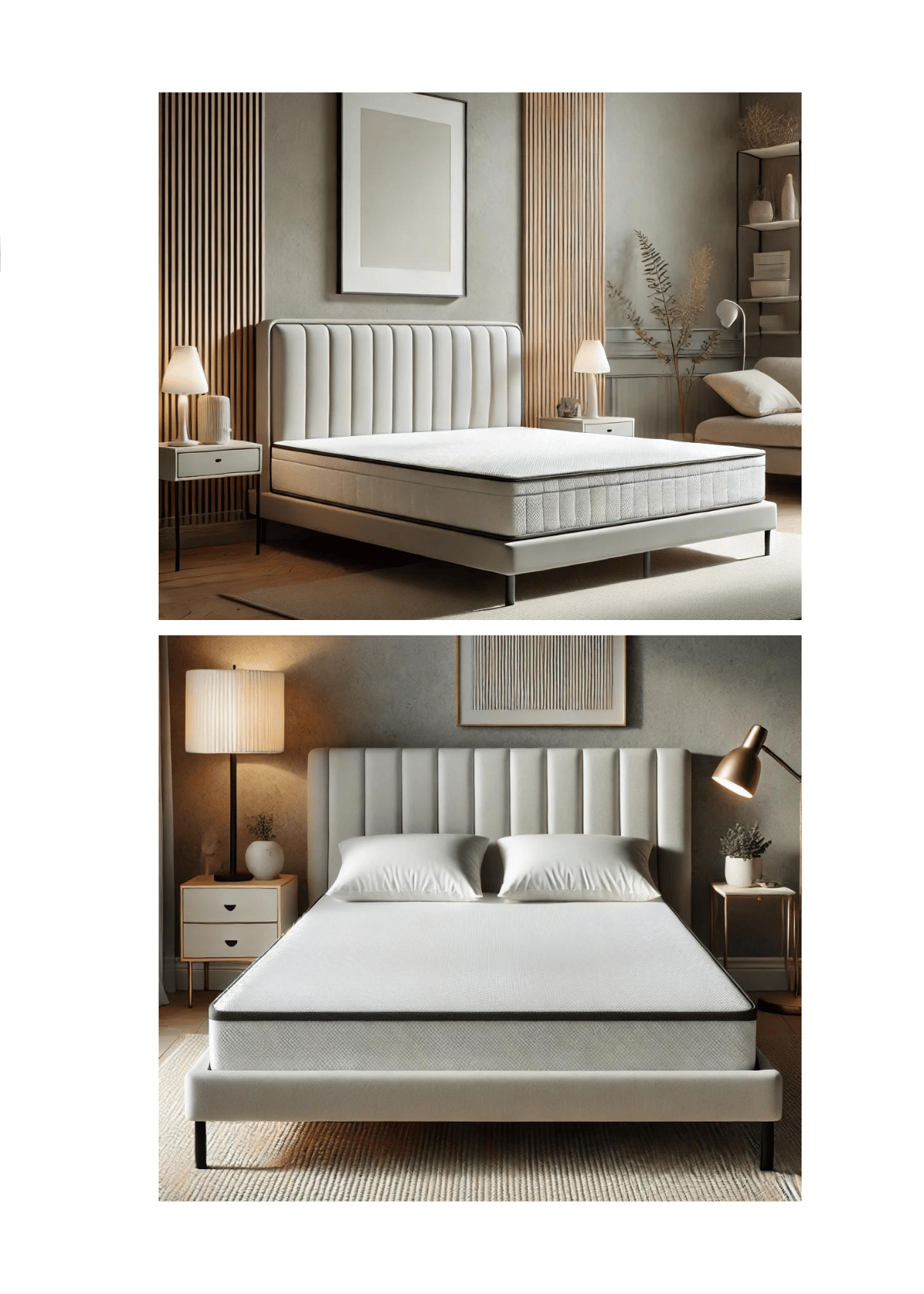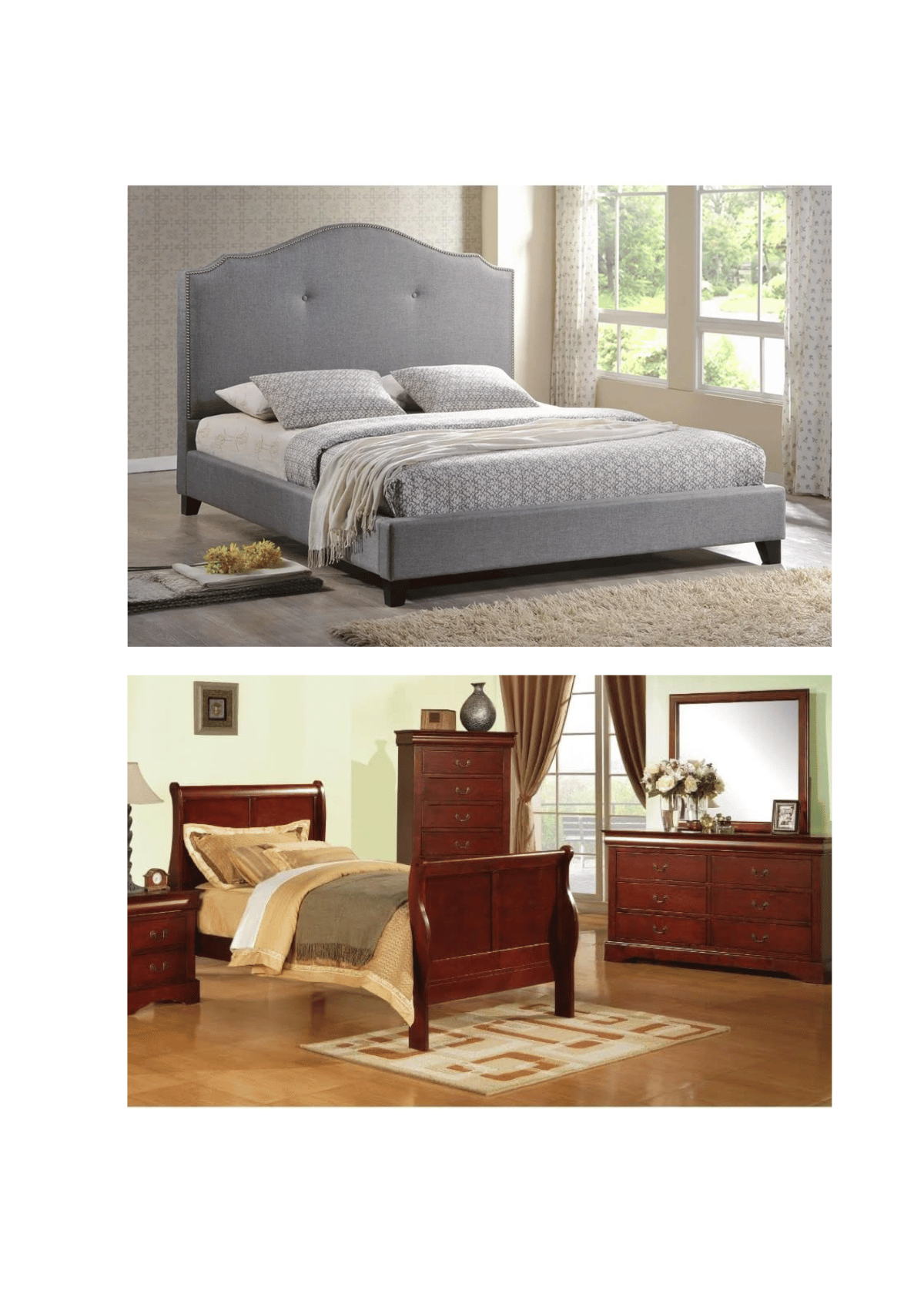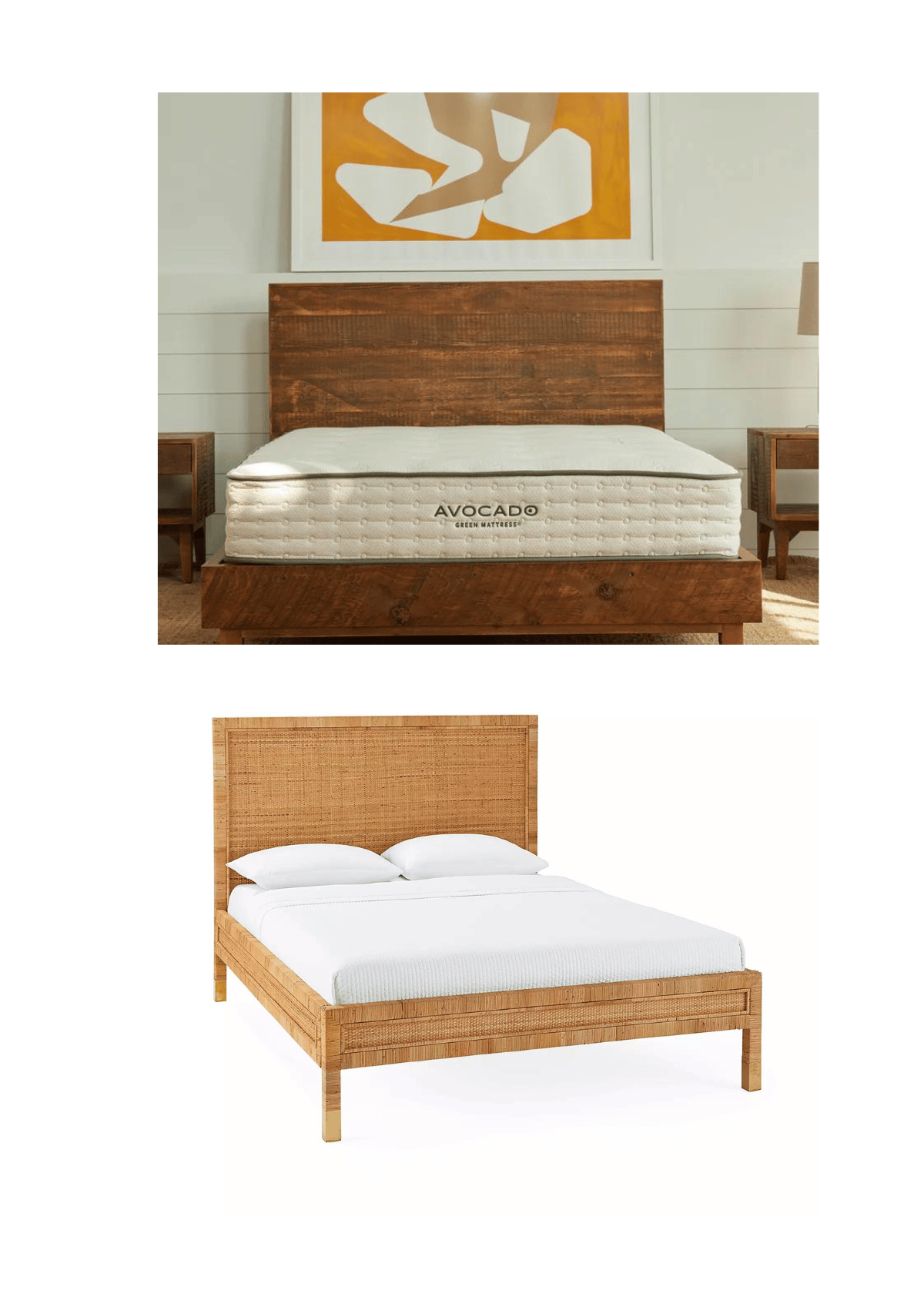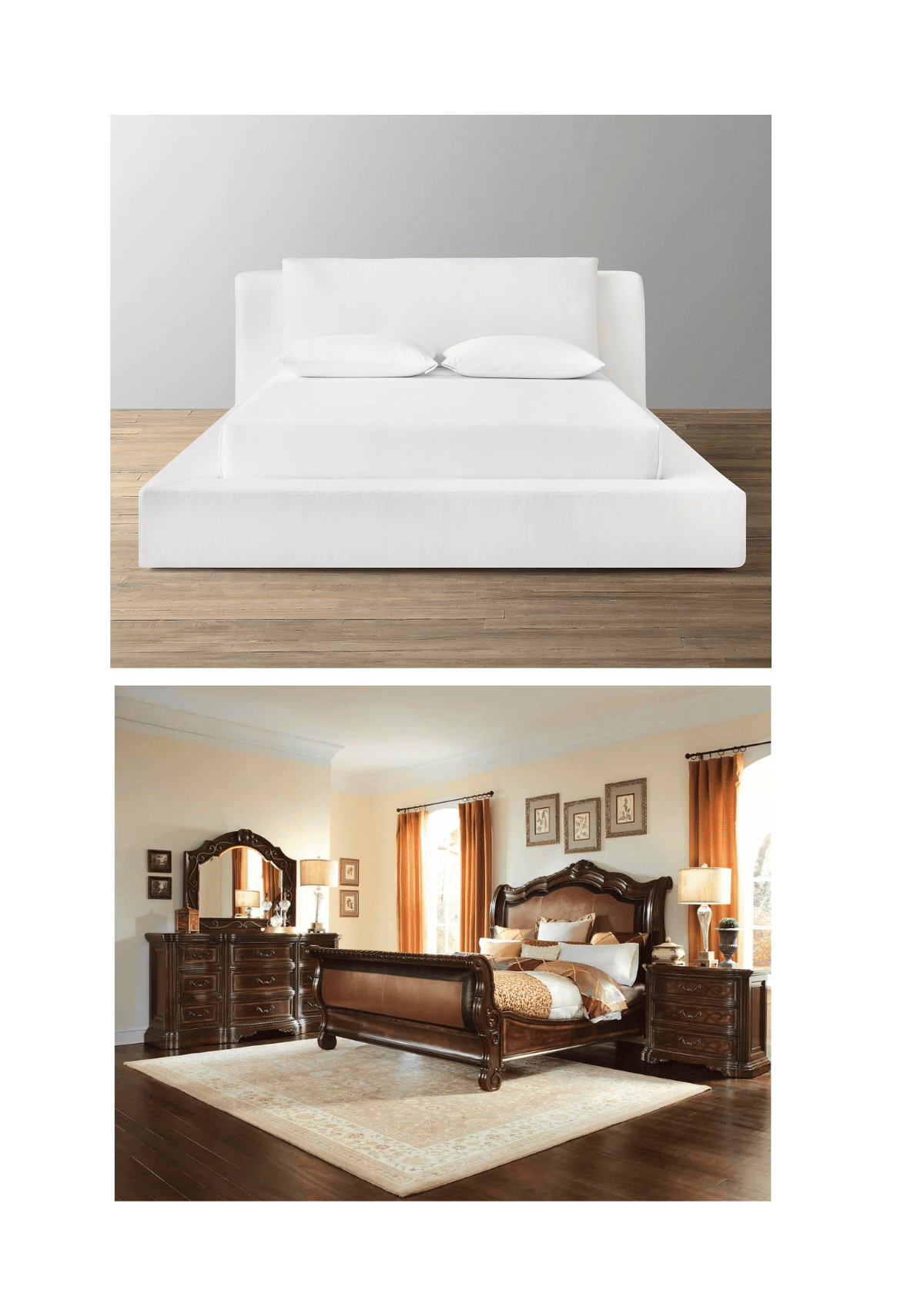(Last Update: 05/13/2025)
Imagine waking up to itchy skin, watery eyes, and tiny irritants in the air in your bedroom.
You pull off the sheets and discover that the culprit is your mattress—specifically, the fiberglass used to make it fire-resistant. Fiberglass is a common fire-inhibiting material because it can withstand high temperatures, which is why it's used in mattresses.
This isn't just an inconvenience; it's a potential health hazard.
Welcome to the world of fiberglass mattress and best mattresses without fiberglass options! But are they truly safe for you and your family?
In this post, I will explore fiberglass, its common use in mattresses, and the associated health threats and legal claims.
Stay with us to make an informed decision about your sleep environment.
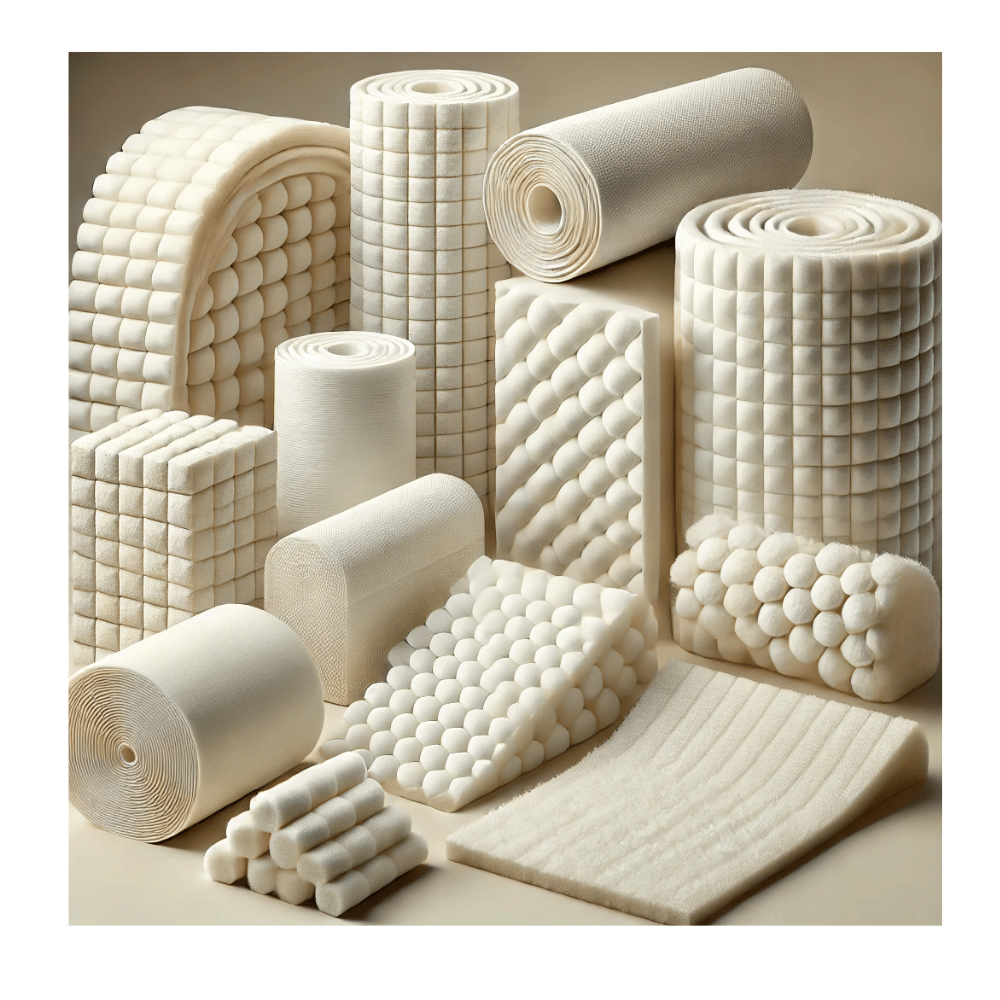
What Is Fiberglass?
Definition: Fiberglass, scientifically known as glass-reinforced plastic (GRP), is a composite material of fine glass fibers woven into a fabric and set using resin.
Fiberglass beds often contain fiberglass for fire protection. The fiberglass inside serves as a fire inhibitor layer.
While effective for fire protection, fiberglass poses some health challenges. Consumers should read tags carefully to understand the materials used.
Common Uses:
- Fiberglass is ubiquitous in many products and industries—from automotive and aerospace to construction and electronics.
- Its high tensile strength, low weight, and weather-resistant properties make it a popular choice for boat hulls, car bodies, roofing, and insulation, among other materials. (Source: U.S. Environmental Protection Agency, "Fiberglass: A Versatile Material").
Glass fiber-reinforced plastic in mattresses.
- If the outer mattress cover rips, fibers can potentially be released into the air. Therefore, it's crucial to inspect your mattress regularly to ensure its integrity.
- Opt for high-quality materials and ensure proper maintenance to protect your family's health and safety.
There are several hazardous flame retardant chemicals that have been used in beds, including:
- Polybrominated biphenyls (PBBs): PBBs are a group of chemicals used as flame retardants in various products, including mattresses, until they were banned in the United States in 1979.
- Polybrominated diphenyl ethers (PBDEs): PBDEs are another group of chemicals used as fire inhibitors in various products, including mattresses.
- Organophosphate flame retardants (OPFRs): OPFRs are a newer class of fire inhibitor often used to replace PBBs and PBDEs.
- Antimony trioxide: Antimony trioxide is a flame retardant used in some mattresses.
Fiberglass in Mattresses:
- Using fiberglass in mattresses aims to meet fire-retardant standards set by regulatory bodies.
- A long-lasting insulating material batting layer is often used beneath the mattress cover as a fire barrier.
- Glass fiber plastic (GFRP) is a composite material made of glass fibers embedded in a polymer resin. The glass fibers provide strength and stiffness, while the resin holds the fibers together.
- However, this use has sparked debates and concerns about health and safety, as the fibers can potentially become airborne if the outer mattress cover is made of translucent material or if the outer cover itself is removed or damaged (Source: Consumer Product Safety Commission, "Standard for the Flammability of Mattresses and Mattress Pads").
- Mattress reviews often highlight the presence of fiberglass as a fire retardant, but it's important to consider potential health risks.
- Consult a medical toxicologist if you have concerns. Fiberglass exposure can lead to respiratory issues, so understanding the materials in your mattress is vital for your overall health and well-being.
Why Is the Fiberglass Mattress Popular?
Which mattresses contain Fiberglass? These beds have gained traction in the market for several reasons, but the cost is often the most compelling.
These mattresses, like memory foam or latex mattresses, are generally more affordable than their counterparts.
Fiberglass in a mattress can catch fire less easily, but concerns about health issues like lung inflammation make it a controversial choice.
- Fiberglass's low production cost translates to savings for the consumer, making it an attractive option for budget-conscious shoppers.
- In addition to cost, the flame-retardant properties of fiberglass are also a selling point for many mattresses.
- Regulatory standards require mattresses to be flame-retardant, and the fiberglass layers are an effective fire barrier.
- This fulfills legal requirements and gives consumers an added sense of safety.
- A new mattress should come with safety guarantees.
- Always verify that these guarantees apply to prevent exposure to unsafe products that could affect your overall health.
- Research and choose mattresses with non-toxic fire retardants, and consider alternatives if you have any concerns about fiberglass content.
Moreover, fiberglass beds are usually lightweight and easy to handle, adding to their convenience. The material's durability also means that, when properly maintained, a fiberglass mattress can last considerably.
GREENGUARD Gold certification and fiberglass mattress: what to look for?
- When evaluating mattresses, understanding the implications of GREENGUARD Gold certification can guide you toward healthier sleep options.
- While GREENGUARD Gold ensures low chemical emissions, it doesn't address physical materials like fiberglass.
- Always verify if a GREENGUARD Gold-certified mattress contains fiberglass to ensure comprehensive safety and comfort.
Health Risks and Concerns
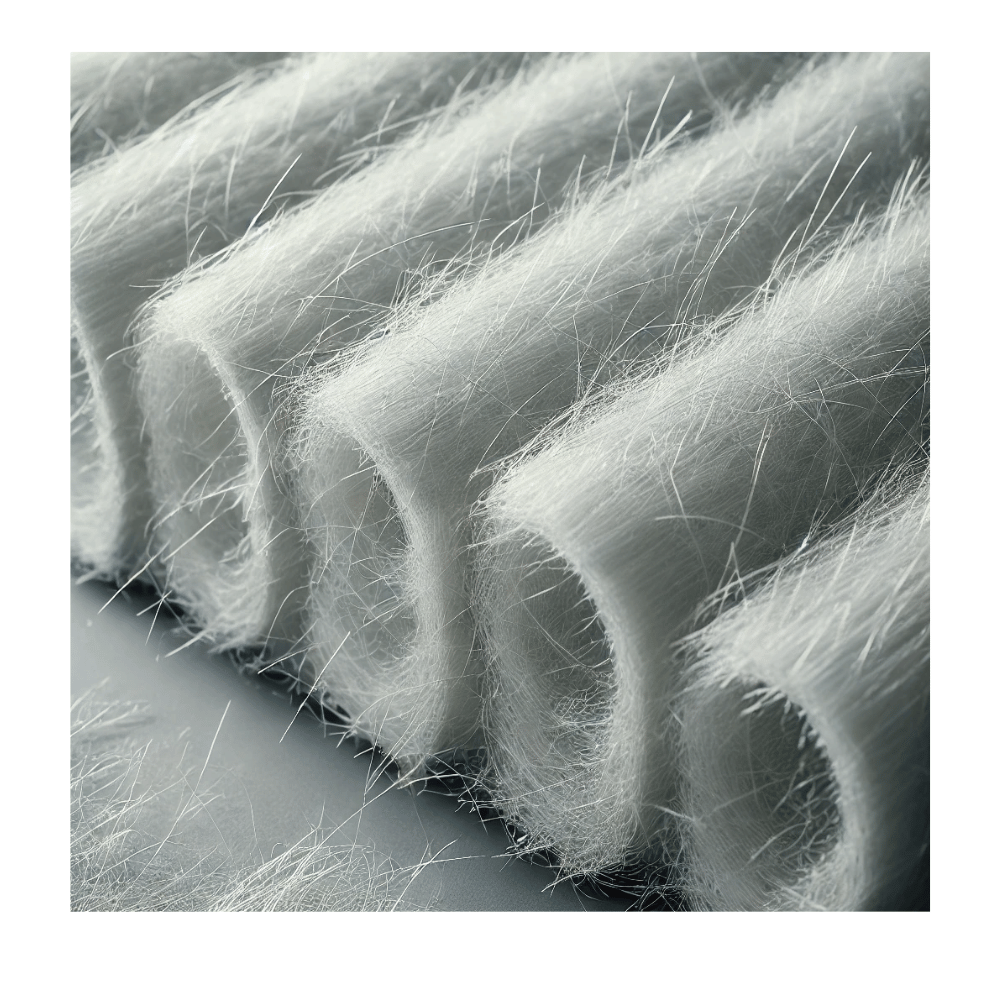
Health Hazards Associated with Fiberglass Exposure
- Fiberglass exposure poses several health threats, primarily through inhalation or skin contact with fiberglass fibers.
- Studies have shown that these fibers can cause respiratory problems and skin inflammation.
- These fibers can be inhaled when airborne, leading to respiratory tract issues, including persistent coughing and difficulty breathing (Source: U.S. Centers for Disease Control and Prevention, "Health Effects of Exposure to Fiberglass").
Respiratory Problems:
- Inhaling fiberglass fragments can lead to lung irritation, causing symptoms similar to asthma (Source: American Lung Association, "The Impact of Fiberglass on Lung Health").
Skin inflammation:
- Physical contact with fiberglass can cause itchiness and rashes, requiring immediate washing and sometimes medical attention (Source: American Academy of Dermatology, "Contact Dermatitis and Fiberglass").
Specific Health Concerns
When it comes to fiberglass beds, the health concerns are even more immediate:
Allergic Reactions:
- The microscopic fiberglass particles can embed themselves in bedding and clothing, triggering allergic reactions in some individuals (Source: Journal of Allergy and Clinical Immunology, "Fiberglass and Allergies").
Pregnancy Risks:
- Antimony trioxide: Antimony trioxide is a flame retardant used in some mattresses.
- Pregnant women are advised to avoid exposure to glass-plastic (GRP) as it can potentially lead to complications (Source: World Health Organization, "Maternal Health and Environmental Risks").
Pet Health:
Fiberglass dust exposure can also affect pets, particularly smaller animals with sensitive respiratory systems (Source: Journal of Veterinary Science, "Impact of Fiberglass on Pet Health”).
Dangers of Fiberglass Exposure
Short-term and Long-term Dangers
Fiberglass exposure poses both immediate and long-term health threats. In the short term, exposure can lead to:
Skin Irritations from Fiberglass bed covers:
- Contact with glass plastic (GRP) fibers can cause immediate itchiness, rashes, and skin inflammation (Source: American Academy of Dermatology, "Contact Dermatitis and Fiberglass").
Respiratory Issues:
- Inhalation of fiberglass fragments can lead to respiratory distress, including coughing and difficulty breathing (Source: American Lung Association, "The Impact of Fiberglass on Lung Health").
Long-term exposure elevates these risks, potentially leading to chronic respiratory issues and skin conditions:
Asthma and Chronic Breathing problems:
- Prolonged inhalation of fiberglass can exacerbate existing respiratory conditions and lead to long-term problems like asthma (Source: Journal of Occupational Medicine and Toxicology, "Long-term Exposure to Fiberglass and Respiratory Health").
Persistent Skin Conditions:
Chronic skin contact can result in lingering dermatological issues, including eczema and dermatitis (Source: Dermatology Journal, "Long-term Skin Conditions and Fiberglass").
Potential Impact on Children and Pets
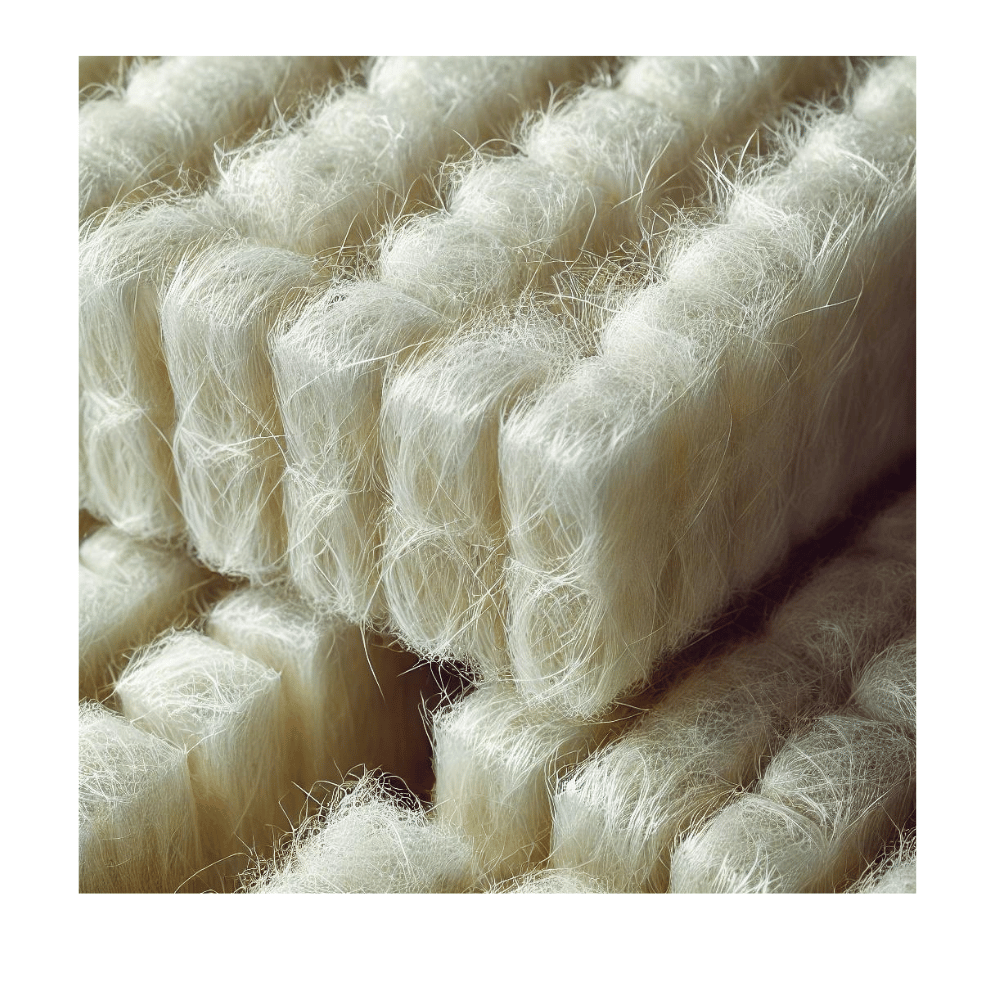
The California Department of Health has expressed concerns over these health problems, especially concerning children.
- Man-made mineral fiber, like fiberglass, is produced from materials such as silica sand and soda ash, which are generally not harmful but can become problematic when inhaled or come into contact with skin.
Children:
- Due to their developing immune and respiratory systems, children are particularly vulnerable to adverse effects (Source: Pediatrics Journal, "Children's Health and Environmental Toxins").
Pets:
- Small animals with sensitive respiratory systems can also be significantly impacted, leading to similar respiratory and skin conditions (Source: Journal of Veterinary Science, "Impact of Fiberglass on Pet Health").
- Understanding these dangers is essential for protecting human family members' and pets' health and well-being.
FIBERGLASS MATTRESS: PROS & CONS
- Fiberglass beds offer several pros and cons that consumers should be aware of. On the positive side, the fiberglass inner cover is an effective fire inhibitor, providing significant resistance to catching fire.
- Many mattress makers prefer using fiberglass to meet flammability standards, as it is less expensive than natural flame-retardant materials.
- This makes such mattresses safe from open flame fire resistance and more affordable for consumers.
Furthermore, toddlers are more vulnerable to these harmful materials, making a fiberglass bed potentially risky.
Mattress Contains Fiberglass: Manufacturers' Labels
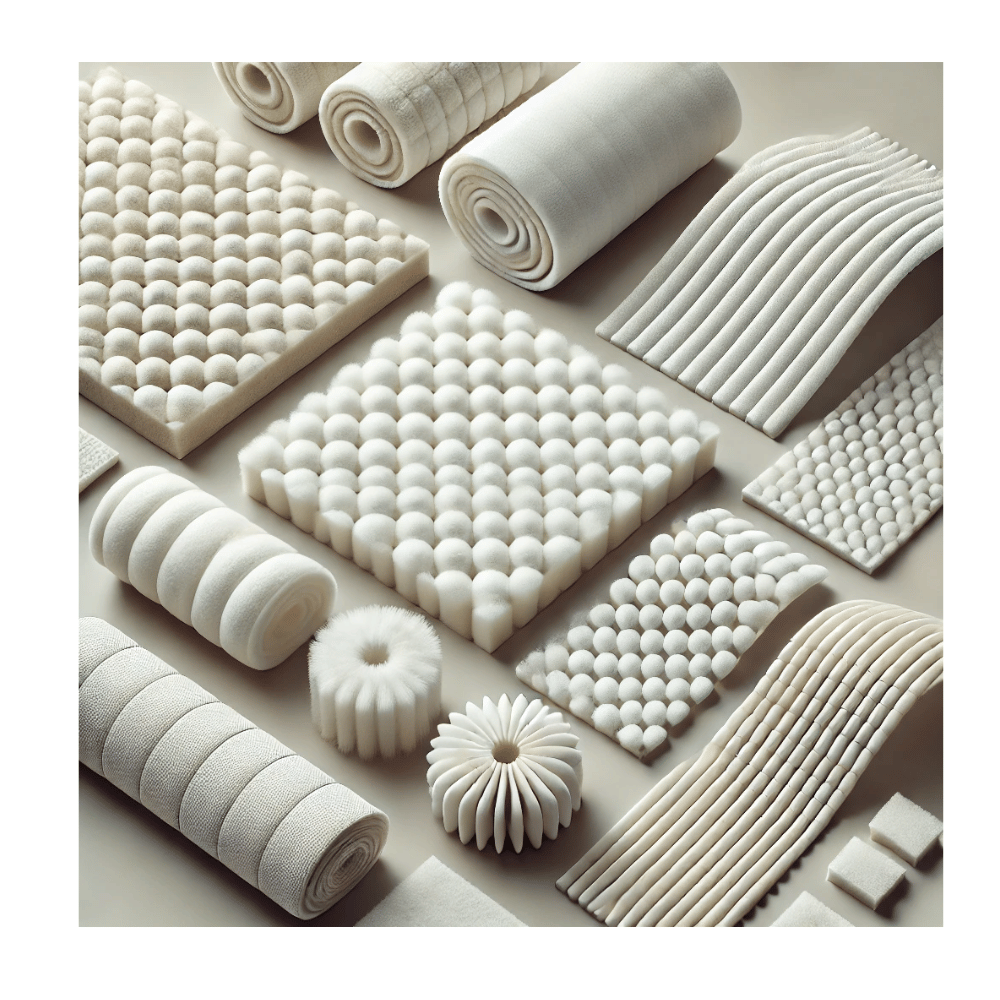
Yet, the heat-resistant properties of fiberglass make it a commonly utilized flame retardant agent.
- Manufacturers prefer fiberglass over chemicals or heavy metals, which can also lead to health issues.
- The mattress manufacturer usually specifies how much fiberglass is on the tag.
- Determining whether your mattress contains glass-reinforcing plastic (GRP) would be best. Unfortunately, not all mattress manufacturers make this information readily apparent. However, there are some key indicators to look for:
Product Labels:
- Check the mattress label for words like "glass fiber" or "fiberglass." These labels are usually on a tag sewn into the mattress or packaging.
Material Lists:
- If possible, please look over the materials used in the mattress. Many reputable companies will disclose this information on their websites or product manuals.
Fire-Resistant Tags and Fire Retardants:
- Mattresses containing fiberglass often have tags indicating they meet fire-resistant standards, which is often an indirect clue about the presence of fiberglass.
Regulations:
- According to the Federal Trade Commission, beds that contain glass-reinforced plastic (GRP) must indicate so on their tags.
- However, the text can be small and easily overlooked (Source: Federal Trade Commission, "Mattress Labeling Rules").
- Despite its functional benefits, consuming fiberglass fragments can cause lung problems and irritate human skin.
- If the protective layer inside the mattress breaks, the material may spread to other areas, such as upholstered furniture or even an HVAC system.
Fiberglass Mattress Alternatives
Helix Luxe Mattress

Price Range
$1,449 - $2,199
Rating: 4.8/5
Best For All Sleep Positions
The Helix Luxe is an all-around mattress for all sleeping styles. Side sleepers get plush layers to cushion pressure points in the shoulders and hips, back sleepers get firm support for spinal alignment, and stomach sleepers get firmer options to keep the hips up and reduce strain on the lower back.
Features and Benefits
Comfort and Support
Hybrid design with foam layers and wrapped coils for balanced support.
- Zoned lumbar support for key areas of the body for spinal alignment.
- Plush EuroTop layer for softness without sacrificing support, a cloud-like sleep surface.
Temperature Regulation
- Tencel cover breathes and wicks away moisture.
- Gel-infused foam layers dissipate heat and maintain a neutral temp.
- Open coil system allows air to circulate freely and stay cool all night.
.
- Independent coils minimize motion transfer no disruptions all night.
- Dense layers absorb vibrations, great for couples with different sleep habits.
- Design isolates movement well, perfect for light sleepers.
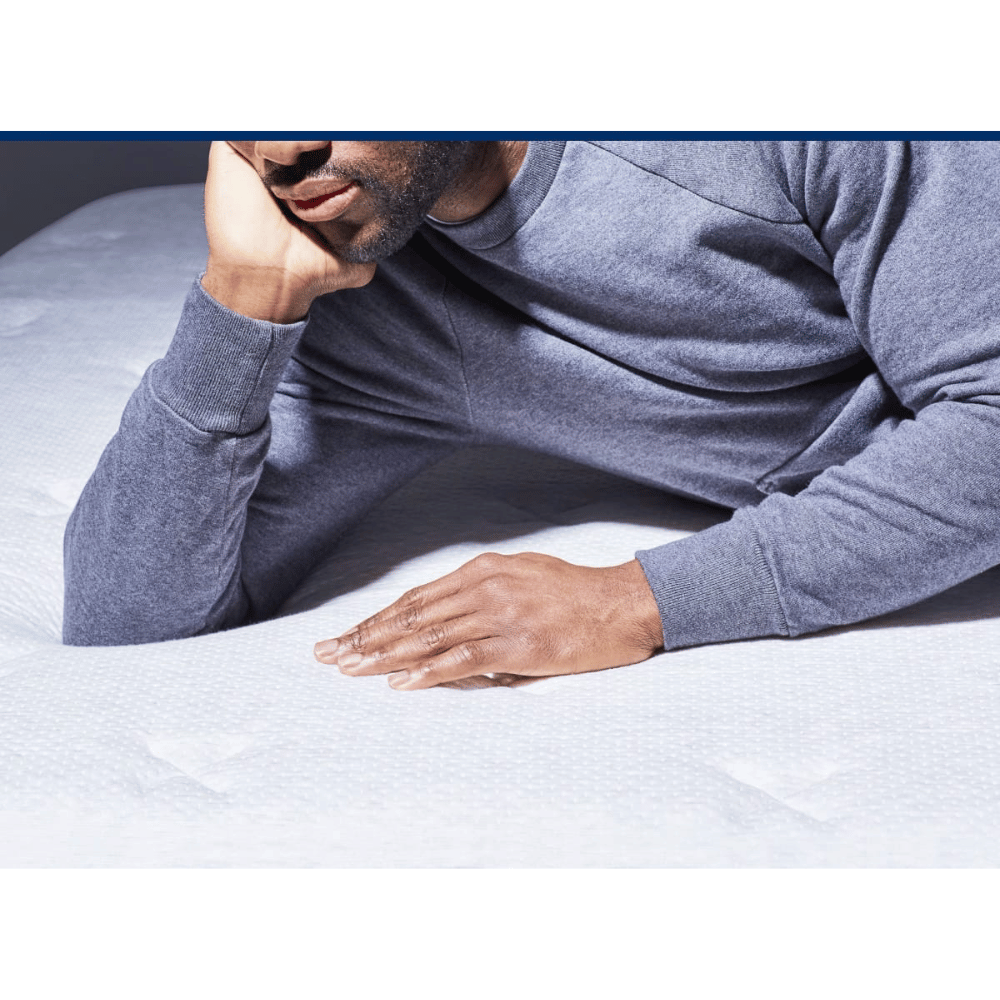
Sleep Innovation
Edge Support
The Helix Luxe has reinforced edges for durability and ease of use. You'll feel stable and secure whether you sit, lie, or sleep near the edges.
The extra support prevents sagging, extends the life of the luxury mattress, and ensures consistent performance across the entire sleep surface. It is great for those who use their mattress as a multifunctional space or couples who need more sleeping space.
Pressure Relief
The Helix Luxe mattress without fiberglass has zoned memory foam that conforms to your body’s natural shape targeted relief. Pressure points in the shoulders and hips are cushioned, reducing strain and discomfort.
Back sleepers get support for the lumbar region, side sleepers get relief in the contouring layers. Softness and support for restful nights without waking up with aches or stiffness.
Noise Reduction
Pocketed coils and layers work together to quiet down movement. Movement on the mattress without fiberglass is absorbed silently, with no squeaks or creaks to disturb a partner. Great for light sleepers and a peaceful sleeping environment, even in active households or apartments with thin walls.
Materials and Safety
The Helix Luxe is made with high-quality, fiberglass-free materials for safety and comfort.
CertiPUR-US certified foams ensure no harsh chemicals, VOCs, and healthier indoor air quality—durable design to last, non-toxic sleep environment for years to come.
From the breathable Tencel cover to the solid coil base, every component of the Helix Luxe is for safety, comfort, and sustainability.
Pros and Cons
Pros:
- Motion isolation
- Multiple firmness options.
- Cooling features for hot sleepers.
Cons:
- Expensive for budget buyers.
- Too tall for some bed frames.
Customer Reviews and Ratings
The Helix Luxe has great customer reviews. Many love the luxury and versatility. Motion isolation and edge support get rave reviews, especially from couples. Customers say the cooling features improve sleep quality. Some say it’s pricey, but most agree it’s worth it.
My Verdict
The Helix Luxe mattress offers luxury, safety, and comfort. Its customizable options, cooling features, and motion isolation make it a top-of-the-line mattress for couples and individual sleepers.
Expensive but durable and innovative, the Helix Luxe is a great investment if you're looking for a fiberglass-free mattress with advanced sleep technology.

Nectar Premier Hybrid Mattress
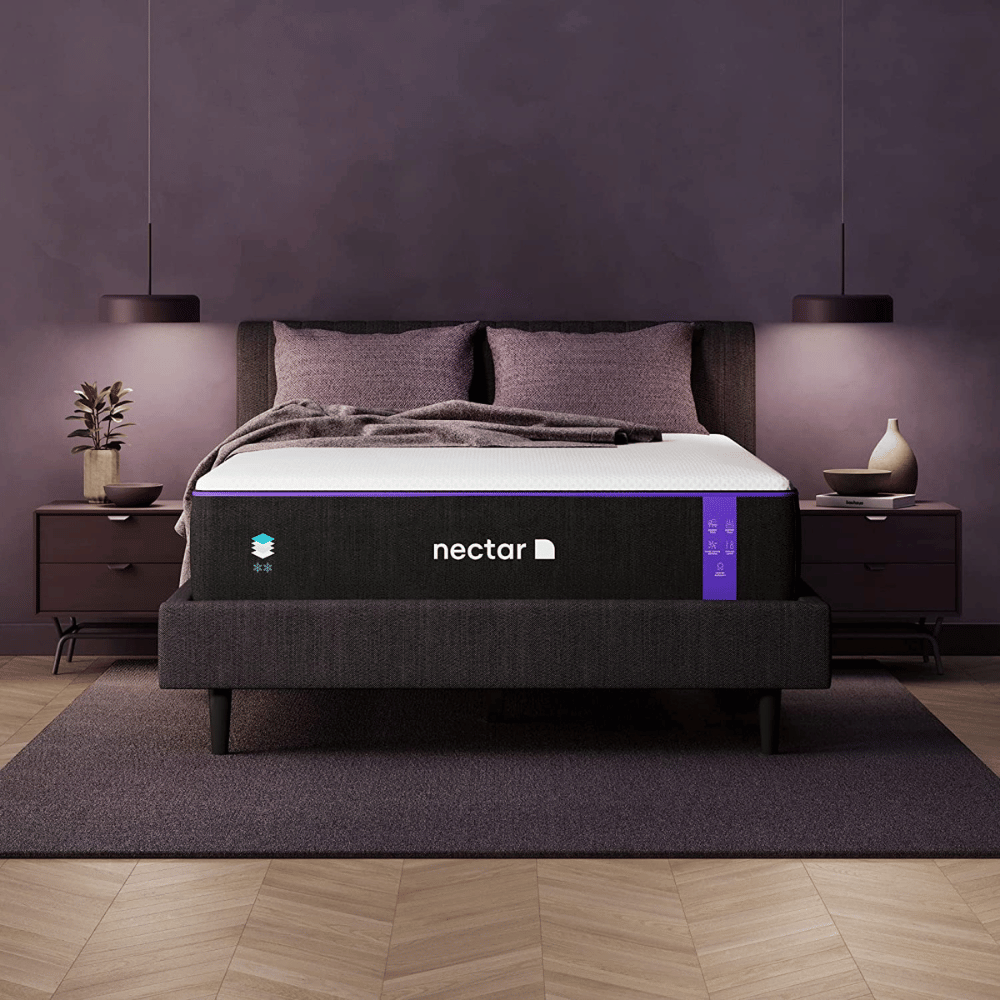
Price Range: $1,199 - $1,599
Rating: 4.6/5
Combination Sleepers
The Nectar Premier Hybrid mattress is versatile and suitable for all sleep positions. Its medium firmness is great for side sleepers and relieves pressure on the shoulders and hips.
The layers support back sleepers and keep the spine aligned, while stomach sleepers get enough firmness to not sink. The hybrid design is also great for combination sleepers, allowing for easy movement throughout the night.
Features and Benefits
Comfort and Support
- Quilted memory foam top layer for plush comfort that conforms to your body.
- Transition layers and pocketed coils for balanced support to keep the spine aligned.
- Medium firmness for most sleepers is a mix of softness and support, not too firm and plush.
Temperature Regulation
- Cooling cover with polyethylene to draw heat away from the body.
- Gel infused memory foam to keep the luxury mattress cool throughout the night.
- Breathable coil system for airflow, no heat buildup, comfortable sleep environment.
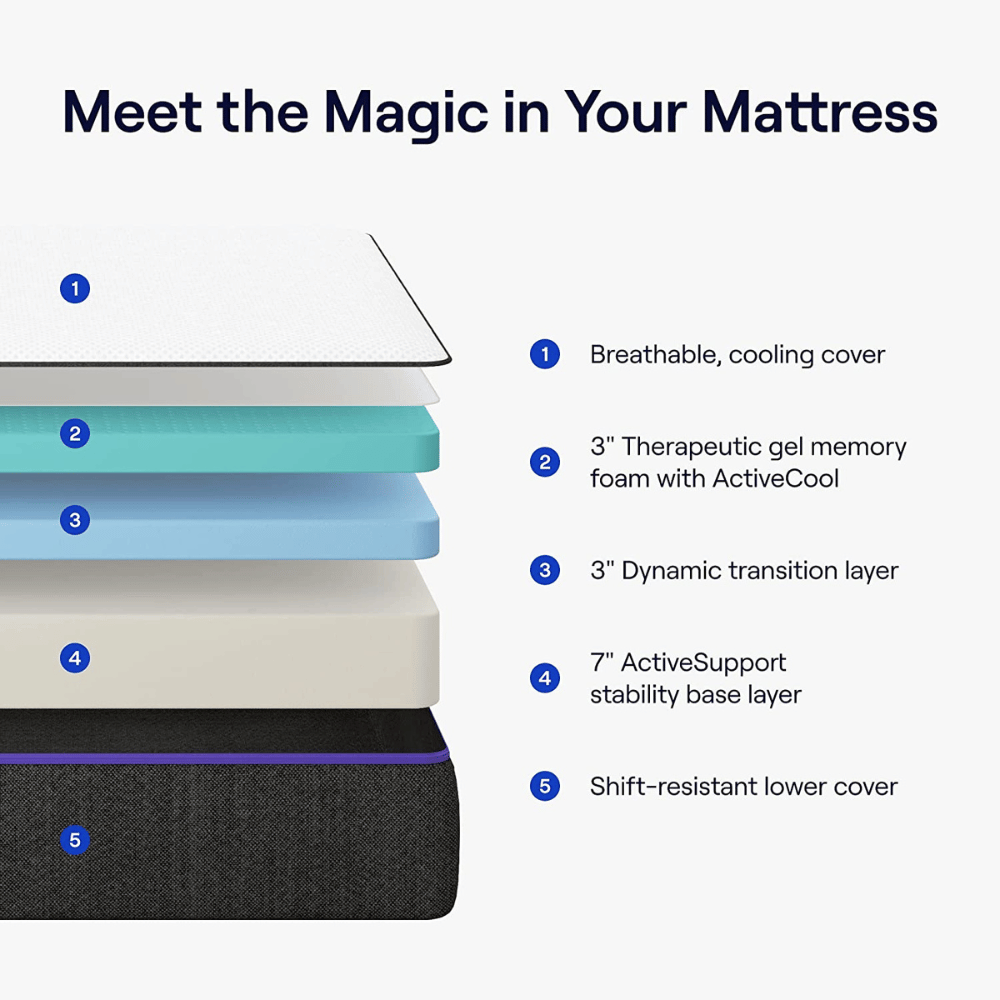
Motion Isolation
- Wrapped coils absorb motion with no transfer across the mattress.
- Memory foam layers for motion isolation are great for couples or restless sleepers.
- Hybrid design balances responsiveness with motion transfer, and undisturbed sleep, even with a partner.
Sleep Innovation
Edge Support
The Nectar Premier Hybrid's reinforced perimeter coils provide great edge support. You'll feel stable and supported when sitting or lying close to the edge. This maximizes usable surface area, which is great for couples or individuals who need more sleeping space.
Pressure Relief
The best mattresses without fiberglass have gel memory foam and adaptive foam layers to relieve pressure points, especially for side sleepers. The contouring effect cradles the shoulders and hips while supporting the lower back, for pain-free and restful sleep. The balanced support also benefits those with chronic joint pain or stiffness.
Noise Reduction
The hybrid design of the Nectar Premier Hybrid reduces noise by combining pocketed coils and layers. The coils are encased to prevent creaking, and the foam absorbs the vibrations. Quiet performance for light sleepers who are sound-sensitive.
Materials and Safety
The Nectar Premier Hybrid uses CertiPUR-US® foams, no harmful chemicals or emissions. Pocketed coils are made of durable quality steel, which adds to the mattress's life—fiberglass-free construction for a safe and eco-friendly sleep environment for health-conscious buyers.
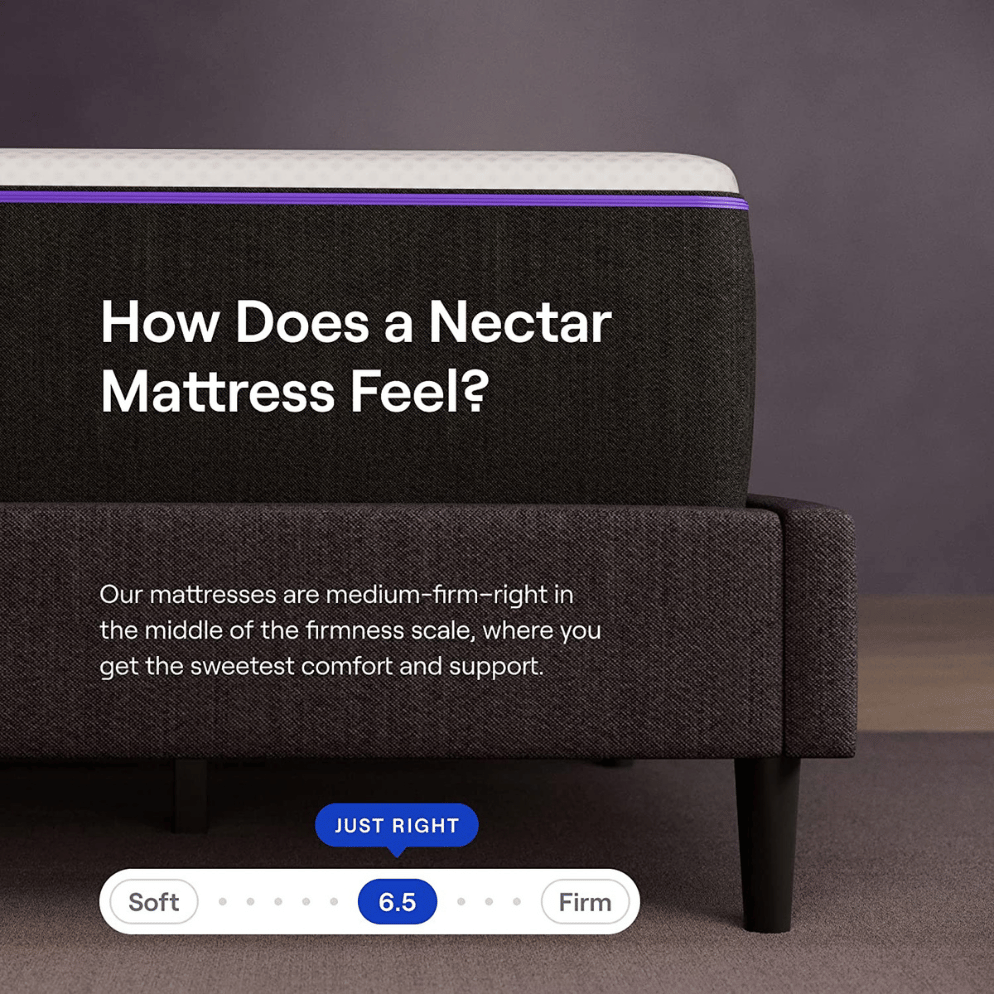
Pros and Cons
Pros:
- Cooling features for hot sleepers.
- Edge support is strong.
- Motion isolation is great for couples.
Cons:
- Not firm enough for stomach sleepers.
- Slightly heavier than all foam models and harder to move.
Customer Reviews and Ratings
Customers like the Nectar Premier Hybrid for comfort, support, and cooling. Side and back sleepers report great pressure relief, and couples like the motion isolation and edge support.
Some reviews say medium firmness is perfect, but a few stomach sleepers say it’s too soft—overall great durability and value for the price.
My Verdict
The Nectar Premier Hybrid is great for sleepers who want comfort, support, and cooling technology. Its hybrid design and premium materials accommodate a wide range of sleep preferences.
Although slightly heavier and more expensive than some models, its durable and innovative features make it worth the investment for long-term comfort.

Bear Original Mattress
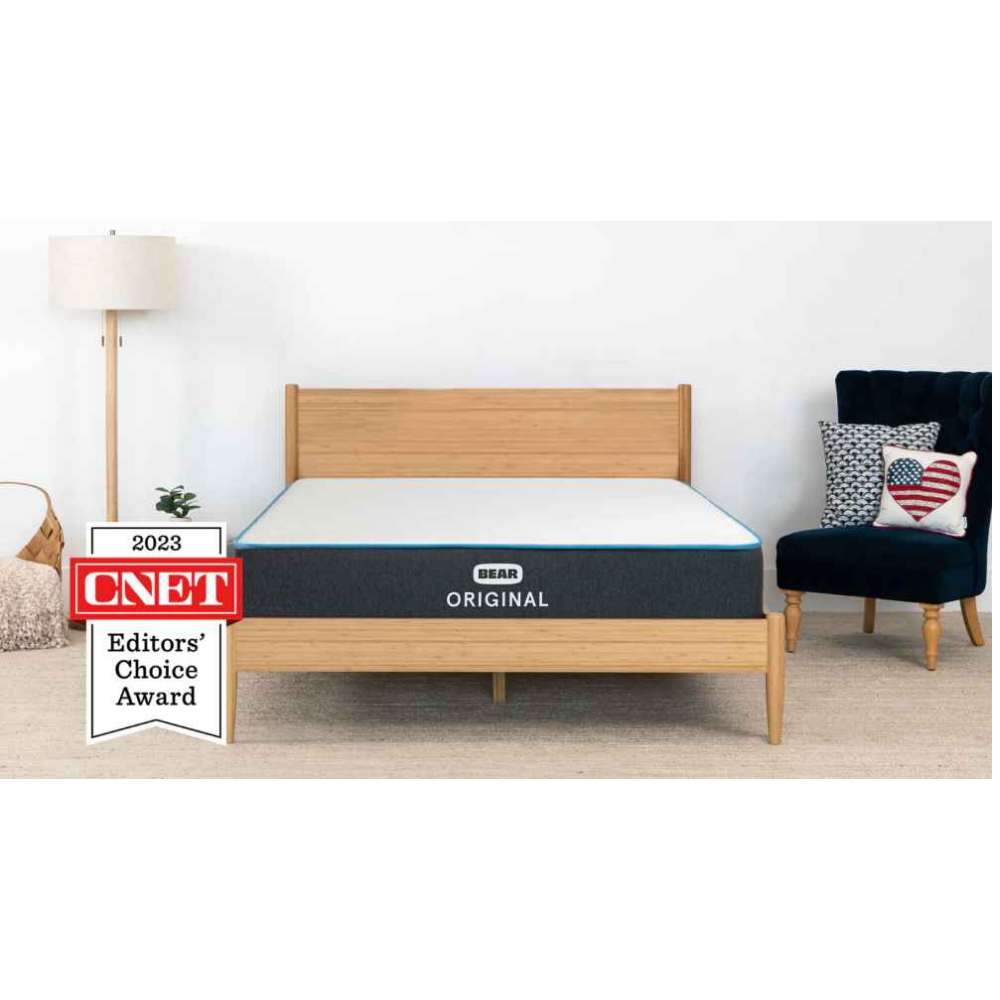
Price Range
$748 - $998
Rating: 4.7/5
Best For Back and Stomach Sleepers
The Bear Original mattress is versatile and fits back stomach, and combination sleepers. Its medium-firm feel provides the right balance of comfort and support for proper spinal alignment.
Back sleepers like how it contours to the body and provides firm lumbar support. Stomach sleepers benefit from the layers that prevent the hips from sinking too deep, which could strain the lower back.
Side sleepers who prefer firmer mattresses may also like it, especially if they like moderate pressure relief.
Features and Benefits
Comfort and Support
- Graphite-infused memory foam that adapts to the body for great contouring and support.
- Responsive foam transition layer for balanced support and no excessive sinking.
- High-density foam base for durability and firm foundation for spinal alignment.
Temperature Regulation
- Graphite-infused foam wicks away heat and keeps the surface cool.
- Open cell memory foam for airflow and no heat retention.
- The Bear Original is designed for hot sleepers and temperature-neutral sleep environments.
Motion Isolation
- High-density foam construction absorbs movement, which is great for couples.
- Even with restless partners, the best mattresses without fiberglass prevent motion transfer and sleep undisturbed.
- Foam layers make the surface quiet, great for light sleepers.
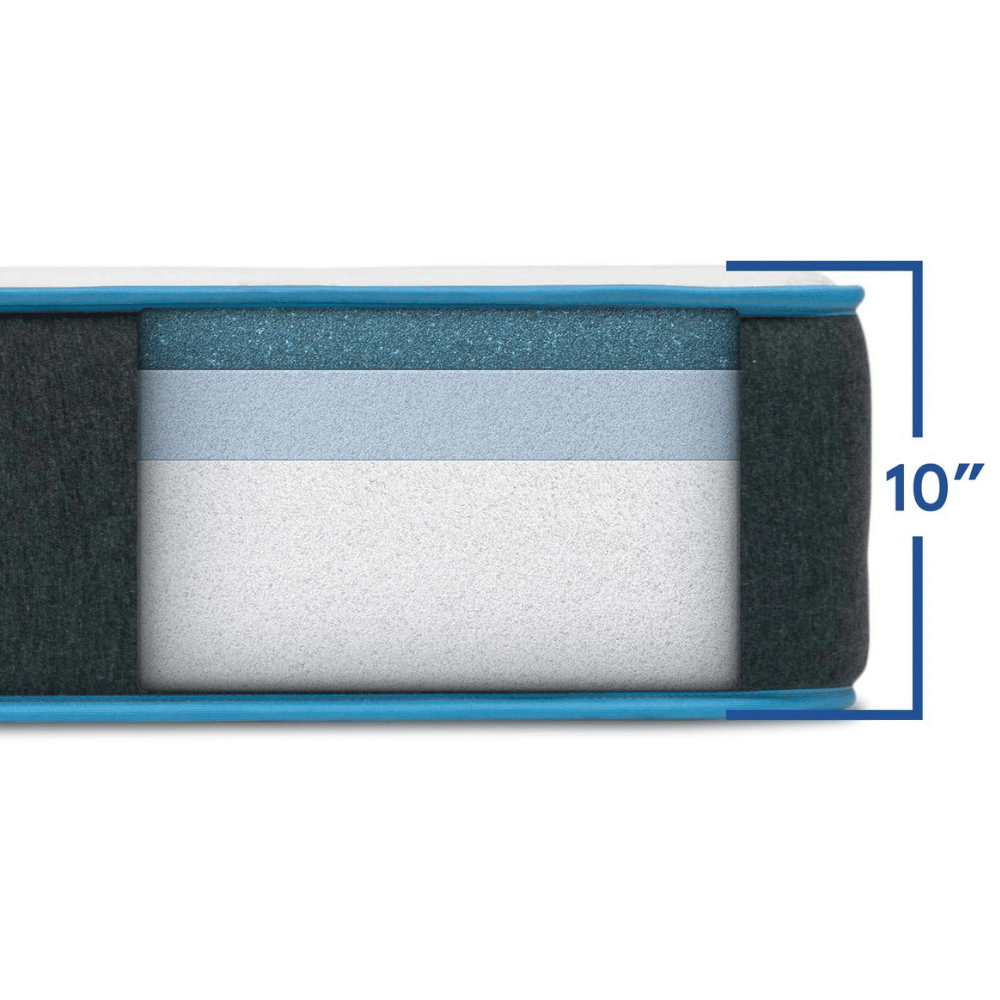
Enhanced Sleep Innovation
Edge Support
The Bear Original has edge-to-edge support thanks to the dense foam base. You can use the entire surface without feeling unstable near the edges.
It doesn’t have reinforced coils like some hybrids, but the high-quality foam provides a secure and supportive edge experience for sitting or lying near the mattress perimeter.
Pressure Relief
The graphite memory foam layer contours the body and relieves pressure points in the shoulders, hips, and lower back. Great for back and stomach sleepers who need firmer support without sacrificing comfort.
Its adaptive nature ensures even weight distribution so you won’t wake up with aches or stiffness.

Noise Reduction
As an all-foam mattress, the Bear Original eliminates the creaks and noises of traditional innerspring mattresses.
The dense layers absorb vibrations, making it a quiet option for light sleepers or couples. Whether tossing, turning, or getting in and out of bed, this luxury mattress is noise-free.
Materials and Safety
The Bear Original is CertiPUR-US® certified, the foams are free of harmful chemicals and low VOC. Fiberglass-free, safe, and healthy sleep environment. High-quality materials designed for durability, comfort, and performance for years to come.
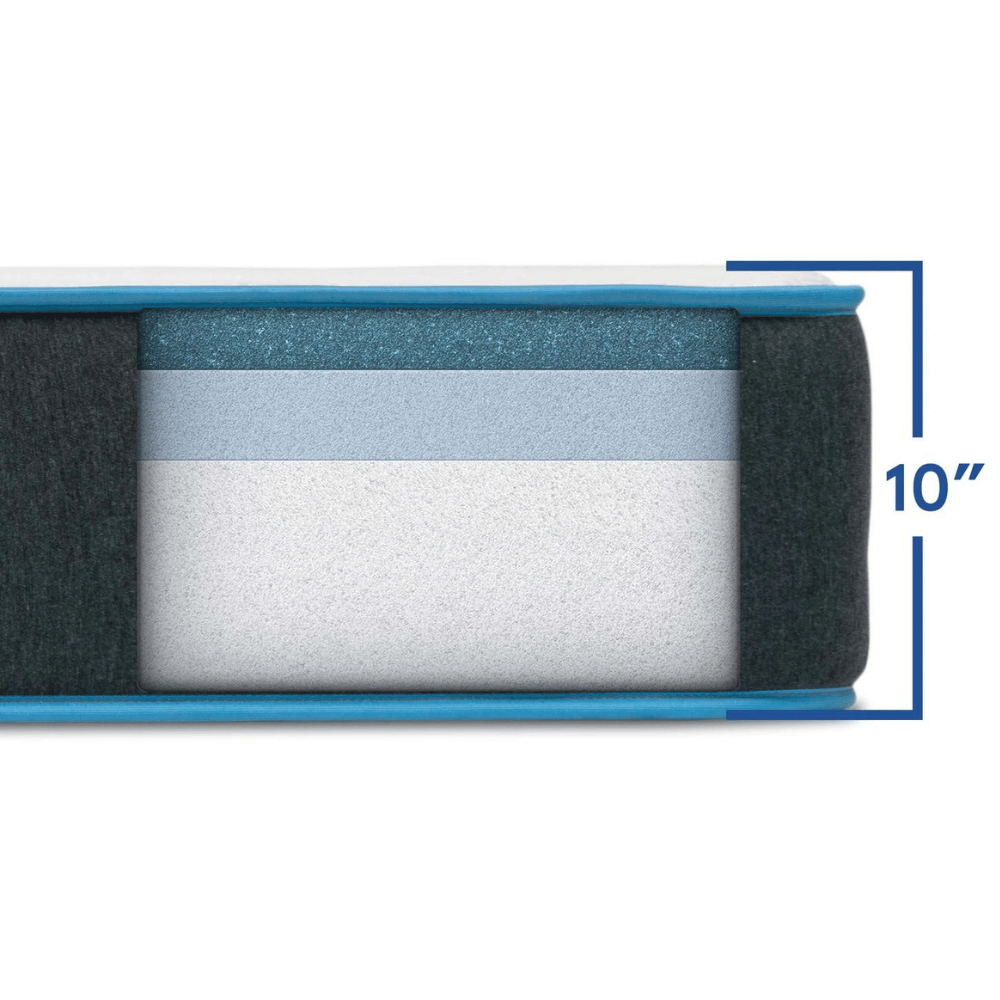
Pros and Cons
Pros:
- Great motion isolation for couples.
- Cooling technology for hot sleepers.
- Dense foam base for durability and support.
Cons:
- Too firm for side sleepers looking for plush pressure relief.
- Edge support could be better than hybrids.
Customer Reviews and Ratings
Customers love the Bear Original for its cooling and supportive design. Back and stomach sleepers like the medium-firm feel for spinal alignment.
Couples like the motion isolation and eco-conscious buyers like the CertiPUR-US® certification. Some side sleepers wish it were softer with more cushioning. The Bear Original is great for comfort, durability, and value.
My Verdict
The Bear Original is great for those who want a medium-firm foam mattress with cooling technology. Supportive for back and stomach sleepers, motion isolation, and quiet for couples. Not for all side sleepers but durable, eco-friendly, and affordable.

Avocado Green Mattress

Price Range
$1,199 - $2,399
Rating: 4.8/5
For Combination Sleepers
The Avocado Green Mattress is versatile and suitable for most sleep positions. Side sleepers love the plush pillow top that adds extra cushioning for pressure relief on the shoulders and hips.
Back sleepers appreciate the support and natural contour, promoting spinal alignment. Stomach sleepers enjoy the firm base layer, preventing the hips from sinking and reducing pressure on the lower back. Combination sleepers value its responsiveness, allowing for easy movement throughout the night.
Features and Benefits
Comfort and Support
- Natural latex for responsive support and body contouring.
- Zoned support for optimal spinal alignment, and less aches and pains.
- Optional pillow top for extra plush comfort for those who prefer a softer feel.
Temperature Regulation
- Natural latex and organic wool are breathable, good airflow.
- Organic cotton cover for moisture wicking keeps you cool and dry.
- Open coil system for airflow, great for hot sleepers.
Motion Isolation
- Wrapped coils absorb motion and reduce transfer, which is great for couples.
- Latex and wool layers for stability and minimal disturbance from the partner’s movements.
- Quiet sleeping surface, no creaks or squeaks.

Enhanced Sleep Innovation
Edge Support
The Avocado Green Mattress features reinforced edges that provide consistent support across the sleep surface. This design ensures you feel secure and stable even when lying near the edge, maximizing the mattress's usable space. It's an excellent choice for couples or anyone needing an extra sleeping room. The durable construction ensures the edges remain intact over time.
Pressure Relief
Natural latex and zoned coils work together to relieve pressure points in the shoulders, hips, and lower back. This balance of support and comfort is great for side and back sleepers. The pillow top adds extra plushness for a luxurious feel and pressure relief.
Noise Reduction
The Avocado Green Mattress combination of latex and wrapped coils is a quiet sleeping experience. The coils are designed to reduce noise and the latex absorbs vibrations, great for light sleepers or those sharing a bed. The noise-free design enhances the sleep environment for uninterrupted sleep.
Materials and Safety
This luxury mattress is made with eco friendly materials, organic latex, wool, and cotton. It has GOTS (Global Organic Textile Standard) and GOLS (Global Organic Latex Standard) certification for non-toxic and sustainable construction. No fiberglass and no harmful chemicals, safe and healthy sleep for you and your family.

Pros and Cons
Pros:
- Eco-friendly materials.
- Great support and pressure relief.
- Hot sleepers.
Cons:
- Expensive for some budgets.
- Heavy, hard to move.
Customer Reviews and Ratings
Customers love the Avocado Green Mattress for its eco-friendly design and comfort. Side and back sleepers rave about pressure relief and support. The pillow top is a favorite for those who prefer a softer feel. Some buyers mention the price, but most agree it’s worth it—couples like the motion isolation and edge support.
My Verdict:
The Avocado Green Mattress is perfect for those who want a luxurious, eco-friendly mattress without sacrificing support or comfort. Natural materials, great pressure relief, cooling for hot sleepers and joint pain. Expensive but durable, sustainable, and premium features for a healthier and more restful sleep.
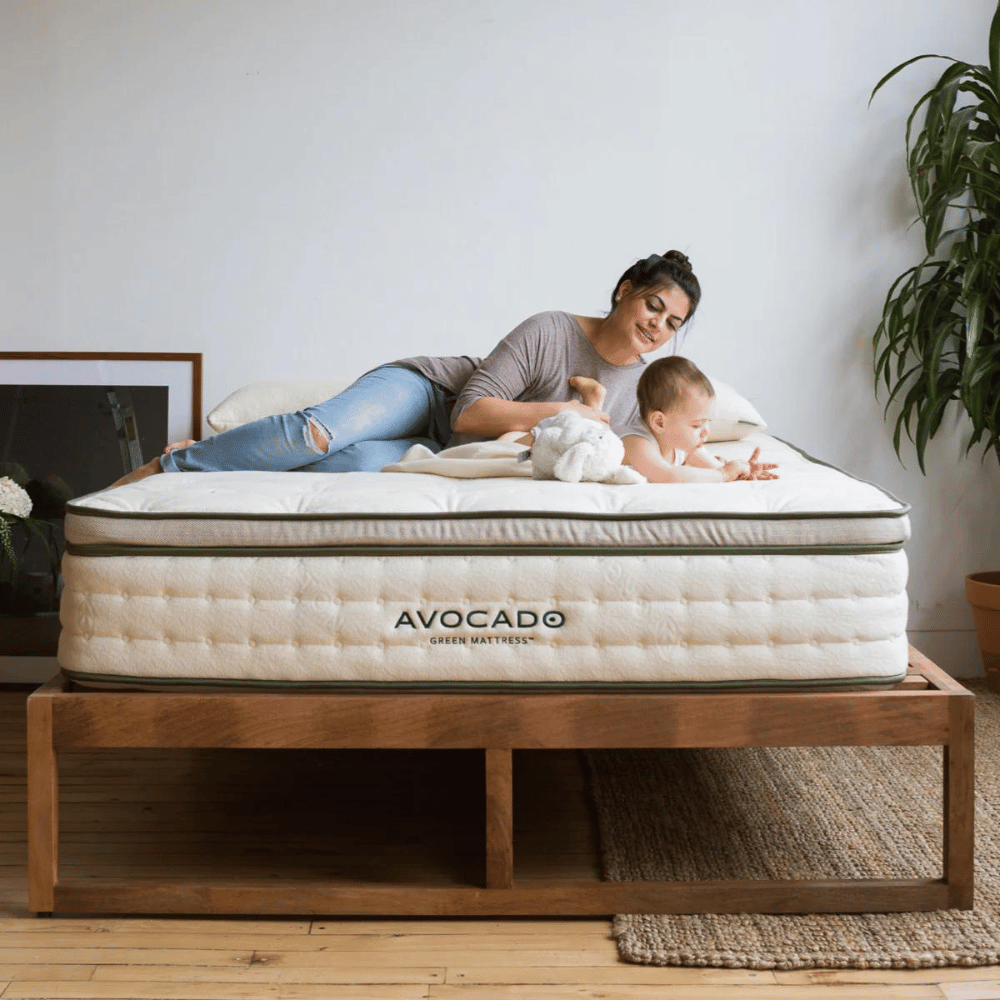
Saatva Classic Mattress
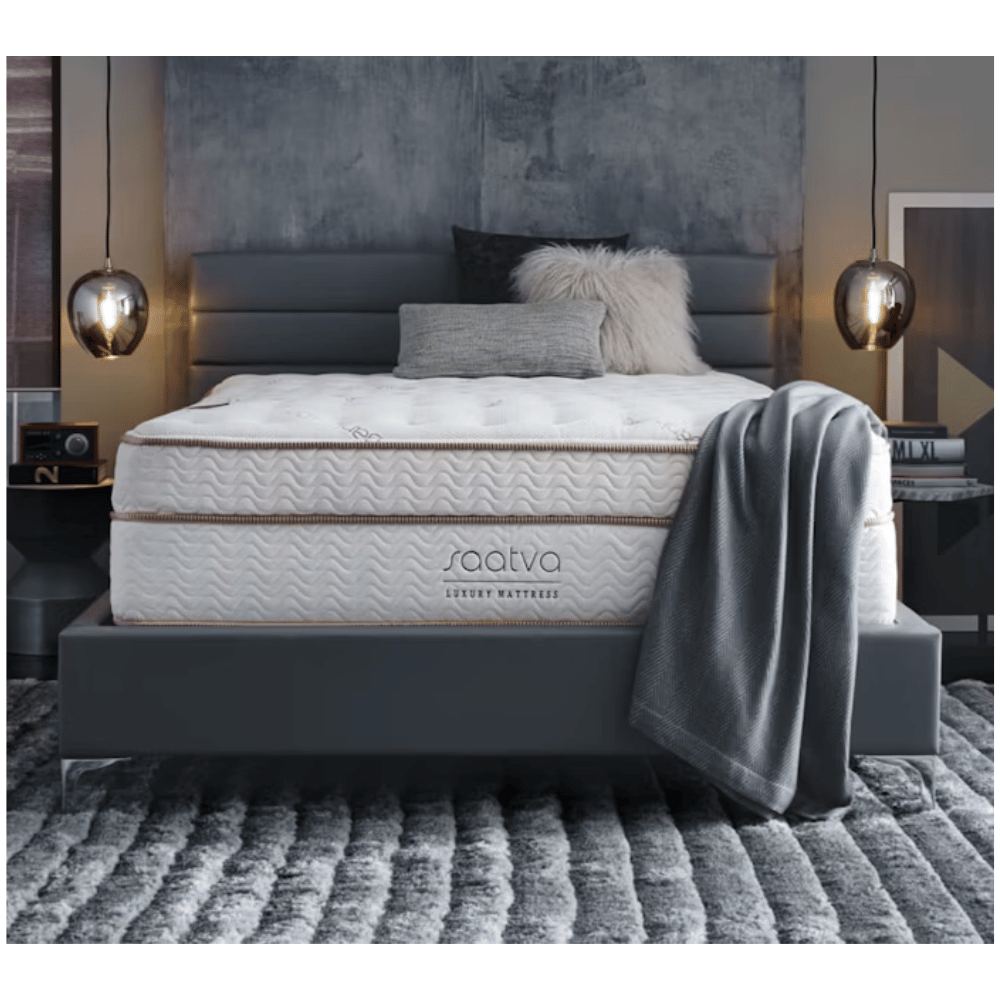
$995 - $2,595
4.9/5
Most Versatile Mattress
The Saatva Classic mattress is great for all sleep positions thanks to its three firmness levels: Plush, Soft, Luxury Firm, and Firm. Side sleepers love the Plush Soft for pressure relief in the shoulders and hips.
Back sleepers prefer the Luxury Firm for spinal alignment and gentle support. Stomach sleepers like the Firm prevent the midsection from sinking too much and putting pressure on the lower back. Combination sleepers enjoy its responsiveness when moving around at night.
Features and Benefits
Comfort and Support
- Dual coil construction with wrapped coils and a durable support base for optimal spinal alignment and durability.
- Plush Euro pillow top for a luxurious feel and body contouring for pressure relief.
- Multiple firmness options for personalized comfort for all sleepers.
Temperature Regulation
- Organic cotton cover for breathability and airflow for a cool sleep.
- Dual coil construction for airflow and no heat retention.
- High density foam layers for comfort without overheating, great for hot sleepers.
Motion Isolation
- Individually wrapped coils absorb motion and minimize motion transfer, great for couples.
- The layers add stability to minimize disturbance from a partner’s movement.
- Its advanced construction for a quiet sleep.
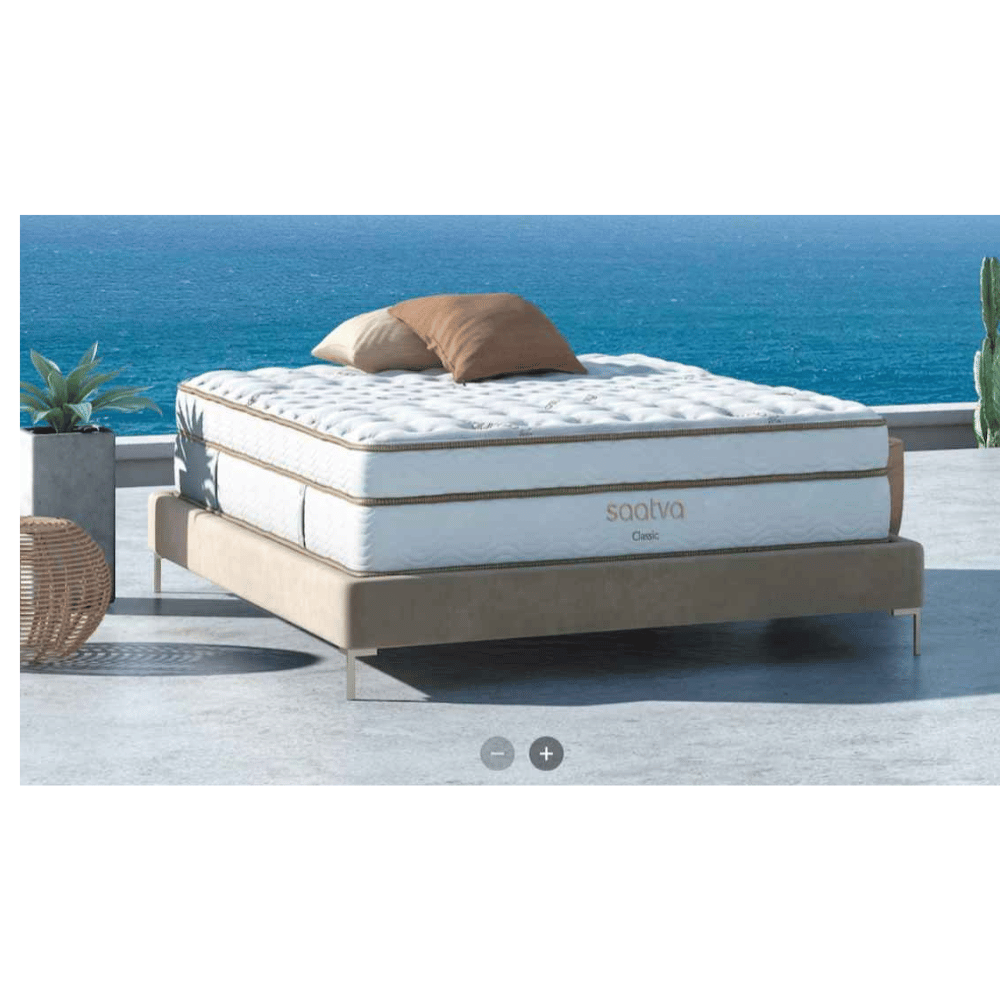
Extra Sleep Innovation
Edge Support
The Saatva Classic mattress has a reinforced foam perimeter for extra edge support. Its edge stays in shape, so you can sleep or sit on it without feeling unstable. Whether sitting or lying on it, the luxury mattress stays in shape. It is perfect for couples or those who need extra sleeping space.
Pressure Relief
Combining wrapped coils and layers relieves pressure, especially in sensitive areas like shoulders, hips, and lower back. Side sleepers love the Plush Soft, back and Stomach, Luxury Firm, and Firm sleepers—this balance of comfort and support for a restful sleep.
Noise Reduction
The Saatva Classic’s dual coil system and foam layers make it a silent sleep surface. The Independent coils reduce creaking and vibrations while the layers absorb movement. It is perfect for light sleepers or those who share a bed.
Materials and Safety
The Saatva Classic uses eco friendly materials, an organic cotton cover, and CertiPUR-US® foams. No harmful chemicals and fiberglass, safe and healthy sleep environment. Durable design for longevity, sustainability, and comfort.

Pros and Cons
Pros:
- 3 firmness options for all sleepers.
- Great edge support and motion isolation.
- Eco-friendly and luxurious materials.
Cons:
- Not for those who want an all foam mattress.
- Higher price than budget options.
Customer Reviews and Ratings
The Saatva Classic garners high praise for its comfort, durability, and customization options. Customers frequently highlight the excellent customer service and the convenience of white-glove delivery.
Side sleepers favor the Plush Soft option, while back and stomach sleepers prefer the Luxury Firm and Firm models. Although some mention the premium price, most agree it’s a worthwhile investment for the mattress's quality and performance.
My Verdict
The Saatva Classic is perfect for a luxurious, customizable mattress that balances comfort, support, and durability. Its dual coil construction, eco friendly materials, and advanced features for all sleep positions. Yes, it’s more expensive, but the long-term value and performance are worth it for a restful and rejuvenating sleep.

DreamCloud Hybrid Mattress
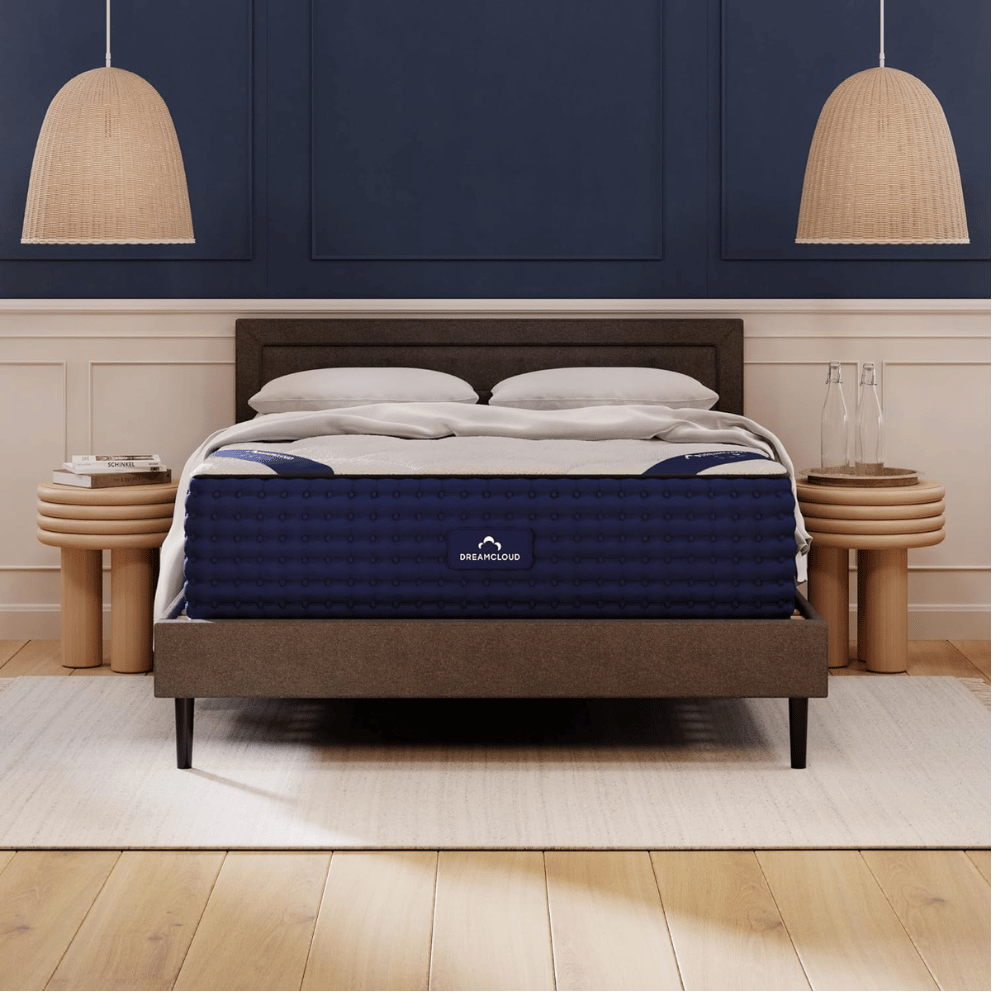
Price Range
$799 to $1,499
Rating: 4.7/5
For all Sleep Positions
The DreamCloud Hybrid mattress is perfect for all sleep positions. Its medium-firm feel supports and comforts back sleepers to maintain proper spinal alignment. Side sleepers love the pressure relief from the memory foam layers cushioning the shoulders and hips.
Stomach sleepers get support from the coil base, which prevents the midsection from sinking too deep. Combination sleepers love the responsive design, allowing easy movement without disturbing a partner.
Features and Benefits
Comfort and Support
- Quilted Euro-top layer and gel infused memory foam for plush comfort and targeted support.
- Wrapped coils for dynamic support and body-conforming.
- Medium firm feel for all sleepers to maintain proper spinal alignment and pressure relief.
Temperature Regulation
- Gel-infused memory foam to dissipate heat.
- Cashmere blend cover for airflow and moisture wicking.
- Hybrid design allows for airflow through the coil system, perfect for hot sleepers.
Motion Isolation
- Individually wrapped coils for minimal motion transfer for couples.
- Memory foam layers absorb motion for minimal disturbance from the partner’s movements.
- Hybrid construction balances responsiveness with stability for undisturbed sleep.
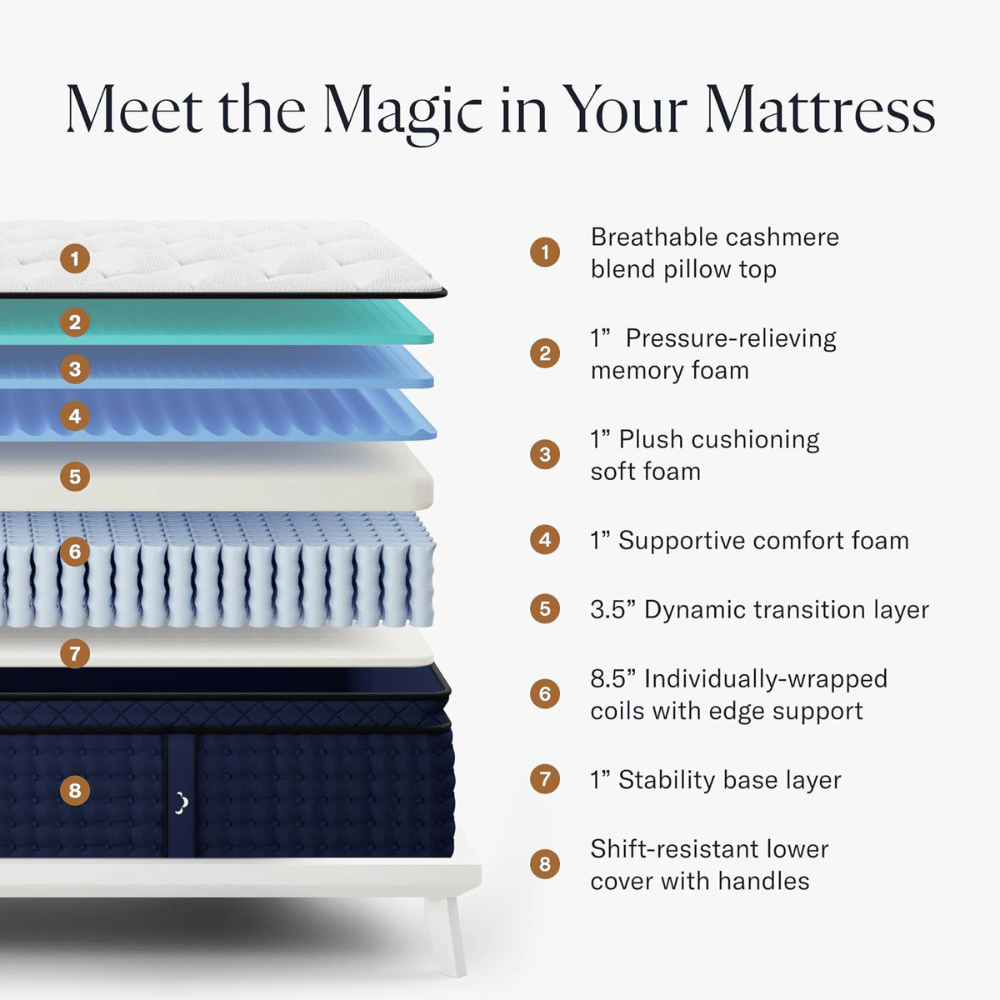
Enhanced Sleep Innovation
Edge Support
The DreamCloud Hybrid mattress without fiberglass has great edge support thanks to the reinforced perimeter coils. This feature keeps the mattress without fiberglass stable and supportive even when sitting or lying near the edge.
The durable edge design maximizes sleep space, perfect for couples or those who need extra room. Also enhances the overall durability of the luxury mattress and keeps its shape over time.
Pressure Relief
The gel-infused memory foam and adaptive coil system relieves pressure points in the shoulders, hips, and lower back. This combination distributes weight evenly, reduces discomfort, and promotes better sleep. Side sleepers love the contouring, and back and stomach sleepers the support base layers.
Noise Reduction
Individually wrapped coils and layers create a silent sleep surface. The coils are encased to prevent creaking, and the foam absorbs vibrations to eliminate noise. Perfect for light sleepers and for a peaceful sleeping environment,t even in active households.
Materials and Safety
The DreamCloud Hybrid has high-quality CertiPUR-US® foams and a steel coil system. No harsh chemicals and no fiberglass. Safe and healthy sleep environment. The cashmere blend cover adds luxury breathability and moisture control.

Pros and Cons
Pros:
- Great edge support and motion isolation.
- Cooling technology for hot sleepers.
- Cashmere blends cover for comfort.
Cons:
- Medium firm feels, not for ultra soft mattresses.
- Weighty design is hard to move.
Customer Reviews and Ratings
Customers love the DreamCloud Hybrid for its comfort and balance. Back and side sleepers love the pressure relief and alignment. Couples love the motion isolation and edge support for better sleep. Some reviews mention that the medium firm feel is not for an ultra-soft mattress, but overall, reviews are very positive for durability, comfort, and value for money.
My Verdict
The DreamCloud Hybrid is a great choice for those who want a luxurious hybrid mattress without fiberglass. It offers all sleepers a medium-firm feel, cooling, and motion isolation. Although it is slightly heavier and firmer than some, its premium materials and design make it worth the investment for long-term comfort and sleep.

Brooklyn Bedding Signature Hybrid Mattress

Price Range
$799 to $1,799
Rating: 4.8/5
Best Customizable Mattress
The Brooklyn Bedding Signature Hybrid mattress is designed to fit all sleep positions with its customizable firmness levels: Soft, Medium, and Firm. Side sleepers love the Soft option for pressure relief on the shoulders and hips.
Back sleepers prefer the Medium option for proper spinal alignment, comfort, and support—stomach sleepers like the Firm option to prevent the midsection from sinking and support the lower back. Combination sleepers also enjoy the responsive design for easy position changes without disturbing a partner.
Features and Benefits
Comfort and Support
- Signature Hybrid has proprietary TitanFlex™ foam for the contouring of memory foam with the responsiveness of latex.
- Individually wrapped coils for dynamic support and adapt to your body movements for a balanced sleep.
- Three firmness options for different sleepers for personalized comfort and support.
Temperature Regulation
- Breathable quilted top layer for airflow and heat dissipation.
- TitanFlex™ foam with cooling gel wicks away heat and keeps the sleep surface temperature neutral.
- Open coil design for ventilation, perfect for hot sleepers or those in warm climates.
Motion Isolation
- Individually wrapped coils for minimal motion transfer so you won’t be disturbed by your partner’s movements.
- Foam layers add to the motion isolation so it’s perfect for couples.
- Hybrid design for a stable and quiet sleeping surface for uninterrupted sleep.
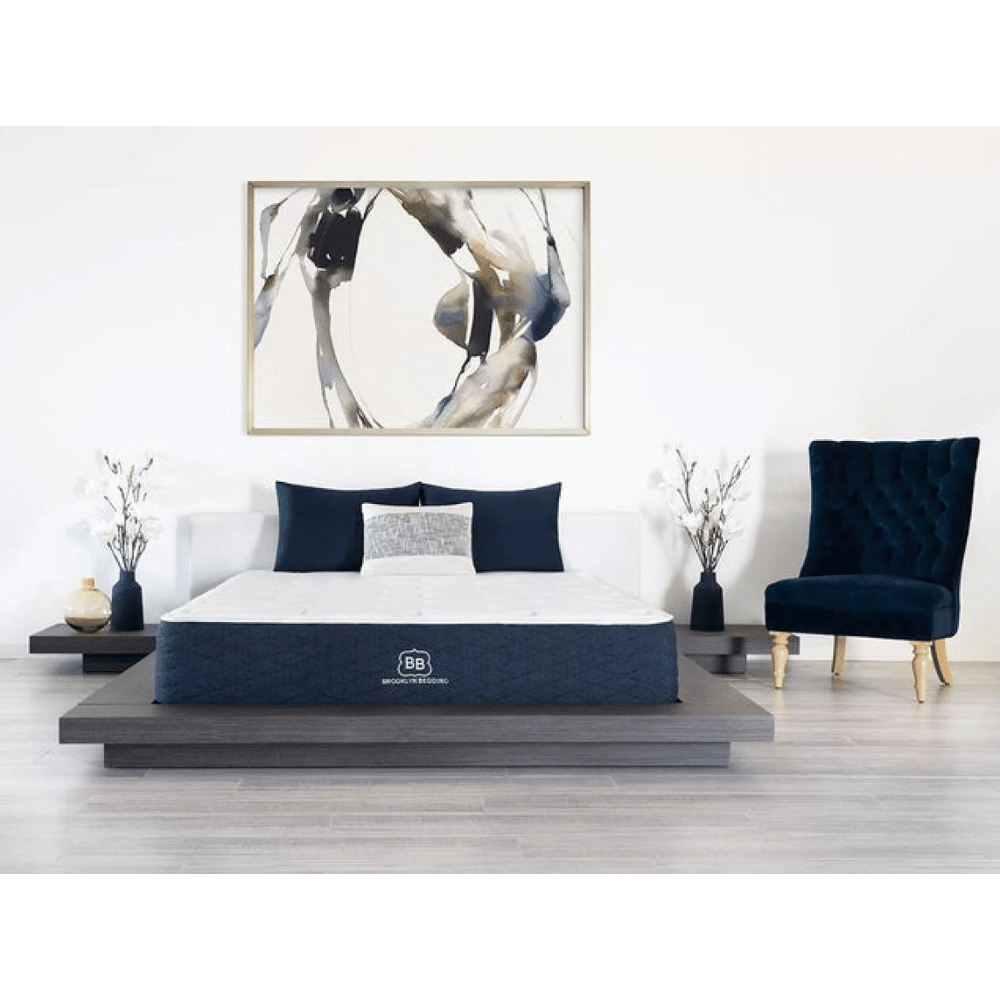
Enhanced Sleep Innovation
Edge Support
The Brooklyn Bedding Signature Hybrid's reinforced perimeter coils provide great edge support. You can sit or lie near the edge without feeling unstable or unsupported.
The edge system also maximizes the sleep surface, making it great for couples or those who want more space. Over time, the edge support maintains its shape for long-term durability.
Pressure Relief
TitanFlex™ foam and wrapped coils provide targeted pressure relief in the shoulders, hips, and lower back. Side sleepers love the cushioning of these pressure points, while back and stomach sleepers like the firm support. The mattress without fiberglass contours evenly to distribute weight for a more restful sleep.
Noise Reduction
Individually wrapped coils and layers for a quiet and stable sleep surface. Coils are wrapped to prevent creaking and noise, foam absorbs movement and vibrations. Perfect for light sleepers or couples who want a noise-free sleeping environment.
Materials and Safety
Brooklyn Bedding Signature Hybrid features high-quality CertiPUR-US® foams and durable steel coils. It does not contain harmful chemicals or fiberglass and is American-made for high quality, durability, and performance.
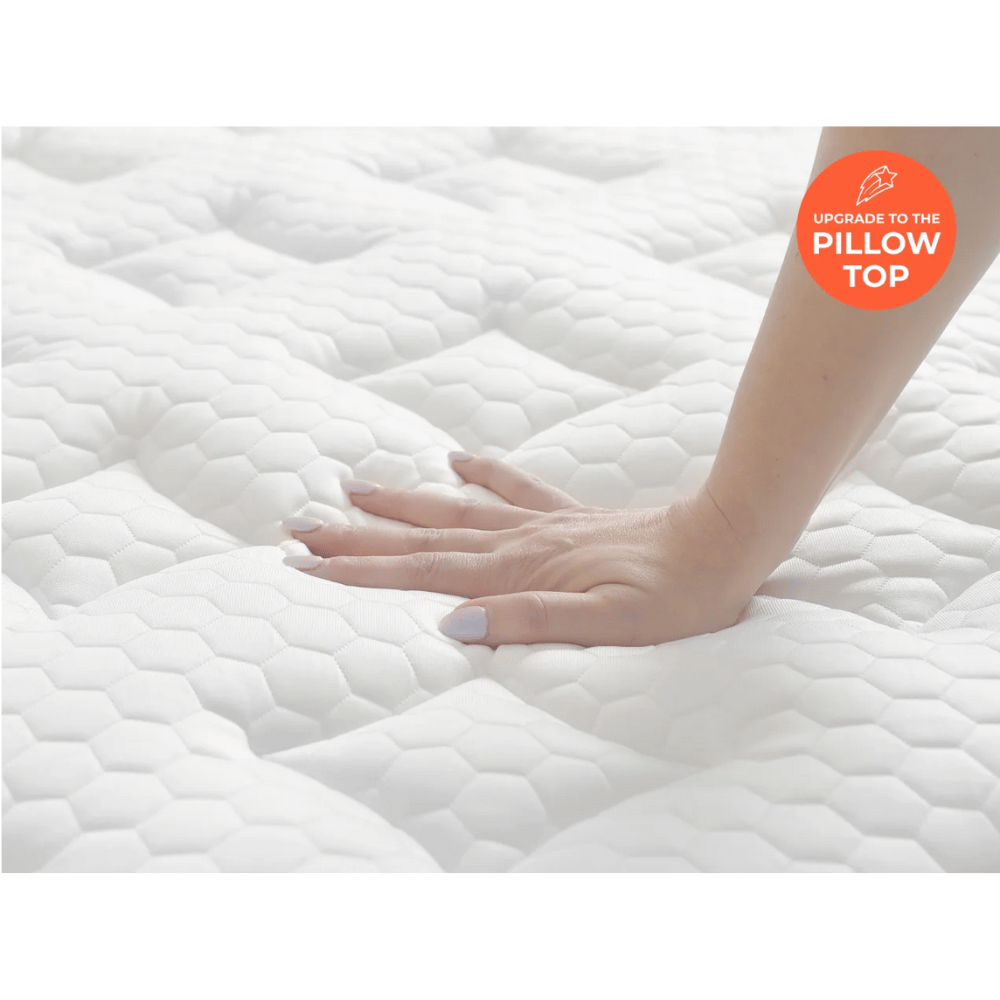
Pros and Cons
Pros:
- Three firmness options for different sleepers.
- Cooling features for hot sleepers.
- Edge support and motion isolation for couples.
Cons:
- Medium firmness may not be soft enough for ultra-soft sleepers.
- Heavier than all foam options so harder to move.
Customer Reviews and Ratings
Customers love the Brooklyn Bedding Signature Hybrid for its versatility and quality. Side sleepers like the Soft option for pressure relief, and back and stomach sleepers like the Medium and Firm options for support.
Couples like the motion isolation and edge support, so it’s a popular choice for shared beds. Some customers mention that the firmness options may not be exactly what they wanted, but overall, the mattress without fiberglass is loved for its durability, comfort, and value.
My Verdict:
The Brooklyn Bedding Signature Hybrid is a great option for sleepers looking for a hybrid mattress. It offers comfort, support, and cooling for all sleepers and most sleeping positions. Although it is slightly heavier than others, it is made of durable premium materials and is affordable for long-term comfort and sleep.

Purple Restore Hybrid Mattress
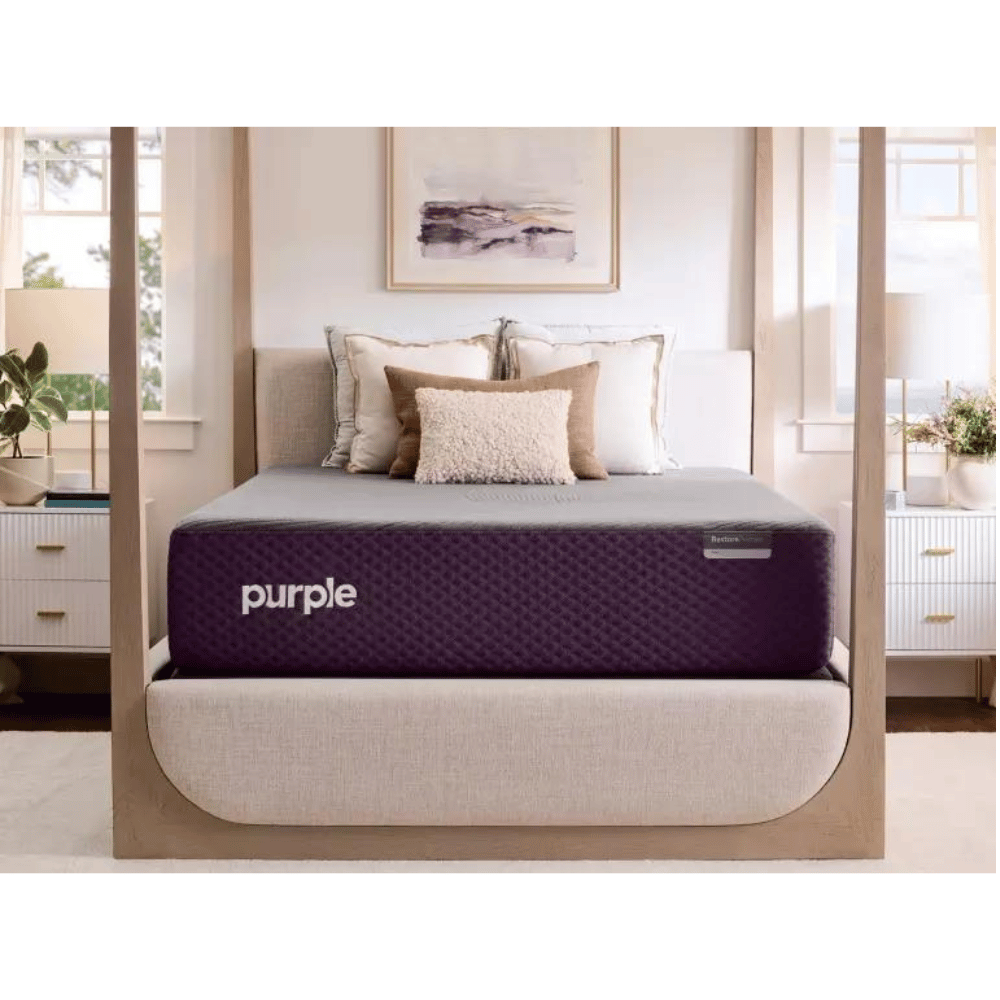
Price Range
$1,795 - $3,495
Rating: 4.8/5
For combination sleepers
The Purple Restore Hybrid is a versatile mattress for side, back, and combination sleepers. Side sleepers love the Purple Grid™ that contours to the shoulders and hips for pressure relief.
Back sleepers like the even weight distribution and spinal alignment from the grid and coil system. Combination sleepers like the responsiveness for easy movement throughout the night. Stomach sleepers may find enough support depending on their weight, but the mattress without fiberglass is best for side and back sleeping.
Features and Benefits
Comfort and Support
- Purple Grid™ adapts instantly to the body for support and pressure relief.
- Individually wrapped coils underneath the grid for dynamic support and no sagging over time.
- Medium feel for all sleepers, plush comfort, and sturdy support.
Temperature Regulation
- Purple Grid™ for airflow and sleep surface temperature neutral for hot sleepers.
- Breathable cover for moisture-wicking for cool and dry sleep.
- Hybrid design with coils for more ventilation for cooling.
Motion Isolation
- Individually wrapped coils for minimal motion transfer so you’re not disturbed by your partner’s movements.
- Purple Grid™ absorbs vibrations so it’s great for couples.
- Hybrid construction for stability and less sleep disruptions.
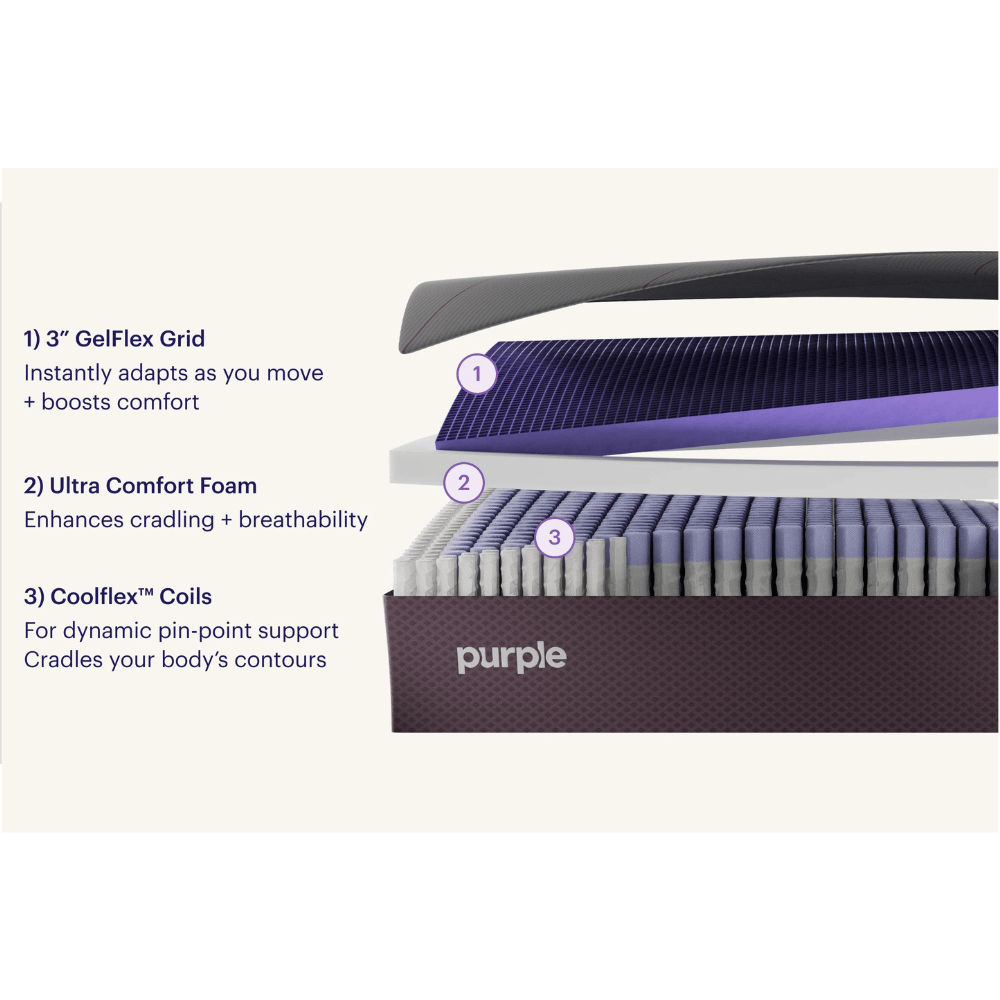
Sleep Innovation
Edge Support
The Purple Restore Hybrid mattress has edge support thanks to the reinforced perimeter coils. This means the edges are sturdy and stable whether you’re sitting or sleeping near them. The edge design is also durable and prevents sagging, giving you more usable surface area. It’s great for couples or those who want more sleep space.
Pressure Relief
The Purple Grid™ is what sets this mattress without fiberglass apart from others with targeted pressure relief that adapts to your body shape. It cushions pressure points in the shoulders, hips, and lower back and provides responsive support for spinal alignment. Side sleepers love this feature while back sleepers get a balanced and supportive feel.
Noise Reduction
Foam, Purple Grid™, and wrapped coils combine to create a quiet, stable sleep surface. The coils are encased to prevent creaking, and the grid and layers absorb vibrations. This noise-free construction is perfect for light sleepers and shared spaces.
Materials and Safety
The Purple Restore Hybrid is made with CertiPUR-US® foams and a non-toxic Purple Grid™ layer for a safe and healthy sleep environment. It is also fiberglass-free, eco-friendly, and built with durable materials for years of comfort and support.
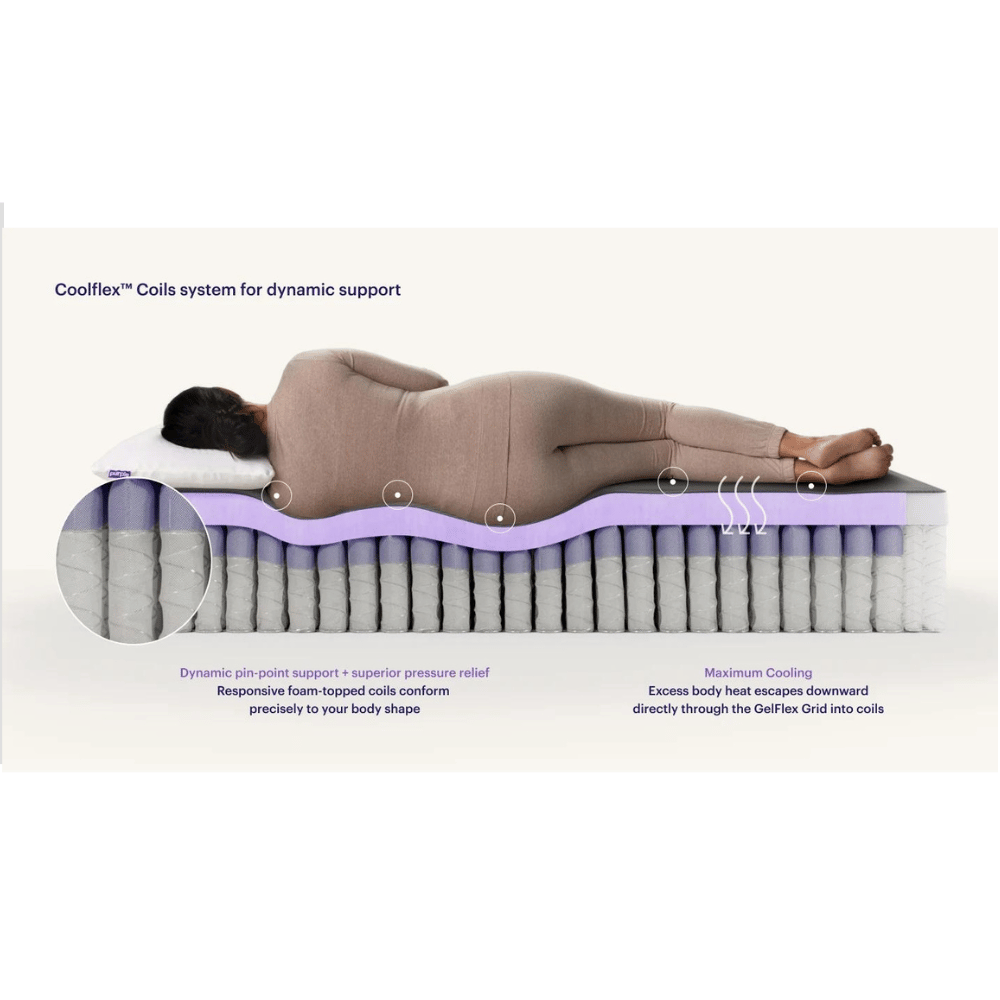
Pros and Cons
Pros:
- Purple Grid™ technology for pressure relief.
- Cooling for hot sleepers.
- Edge support and motion isolation for couples.
Cons:
- Expensive.
- Stomach sleepers over 230 lbs may want a firmer option.
Customer Reviews and Ratings
Customers love the Purple Restore Hybrid’s Purple Grid™ for comfort and pressure relief. Side sleepers say it cushions pressure points and back sleepers say it supports spinal alignment. Couples love the motion isolation and edge support for shared sleep. Some mention the higher price, but most say the durability and comfort are worth it.
My Verdict:
The Purple Restore Hybrid is the top choice for sleepers who want innovative comfort, cooling technology, and long-lasting support. The Purple Grid™, combined with the dynamic coil system, is for side and back sleepers and provides great motion isolation and edge support. It is expensive but worth it for those who value comfort and quality.

Plank Firm Mattress

Price Range
$699 to $1,499
Rating: 4.6/5
Best For
back and stomach sleepers
The Plank Firm mattress is designed for back and stomach sleepers who want an ultra-firm sleep surface. Its flippable design has two firmness levels, Firm and Extra Firm, for those needing extra spinal alignment support.
Back sleepers get even weight distribution to prevent lower back strain, and stomach sleepers get firmness to keep hips elevated and aligned with the rest of the body. Side sleepers may find it too firm, as it provides minimal contouring for pressure relief in the shoulders and hips.
Features and Benefits
Comfort and Support
- Flippable design with Firm and Extra Firm options for customizable support.
- High-density foam layers for support and spinal alignment and to reduce back pressure.
- For those who want a firm and supportive sleep surface without the sinkage of memory foam.
Temperature Regulation
- Cooling panel upgrade available to enhance temperature regulation and dissipate heat throughout the night.
- Breathable cover and layers for airflow to prevent overheating.
- Designed for hot sleepers the Plank Firm sleeps neutral.
Motion Isolation
- High-density foam absorbs movement well, minimizes motion transfer, and ensures undisturbed sleep for couples.
- A firm surface reduces vibrations, which is great for light sleepers or those with restless partners.
- Solid foam construction for stability and less sleep disruptions.

Enhanced Sleep Innovation
Edge Support
The Plank Firm mattress has great edge support due to its dense foam construction. Sleepers can sit or lie near the edge without feeling like they will roll off, maximizing the usable sleep surface. Great for couples who share a bed and need extra room or for individuals who use the edges frequently for sitting or reclining.
Pressure Relief
While the Plank Firm is designed for firmness not contouring it does provide some pressure relief for back and stomach sleepers. The layers distribute weight evenly to prevent lower back and hip strain. Side sleepers may not get the same level of relief as the surface doesn’t have the plush cushioning for pressure points in the shoulders and hips.
Noise Reduction
The solid foam design makes the Plank Firm a silent sleep surface. Unlike innerspring or hybrid mattresses, it does not creak or vibrate. It is great for light sleepers or those who want a quiet environment.
Materials and Safety
CertiPUR-US® certified, it does not contain harmful chemicals or toxins. Its fiberglass-free construction ensures safety and durability, and its high-quality foam provides long-lasting support.
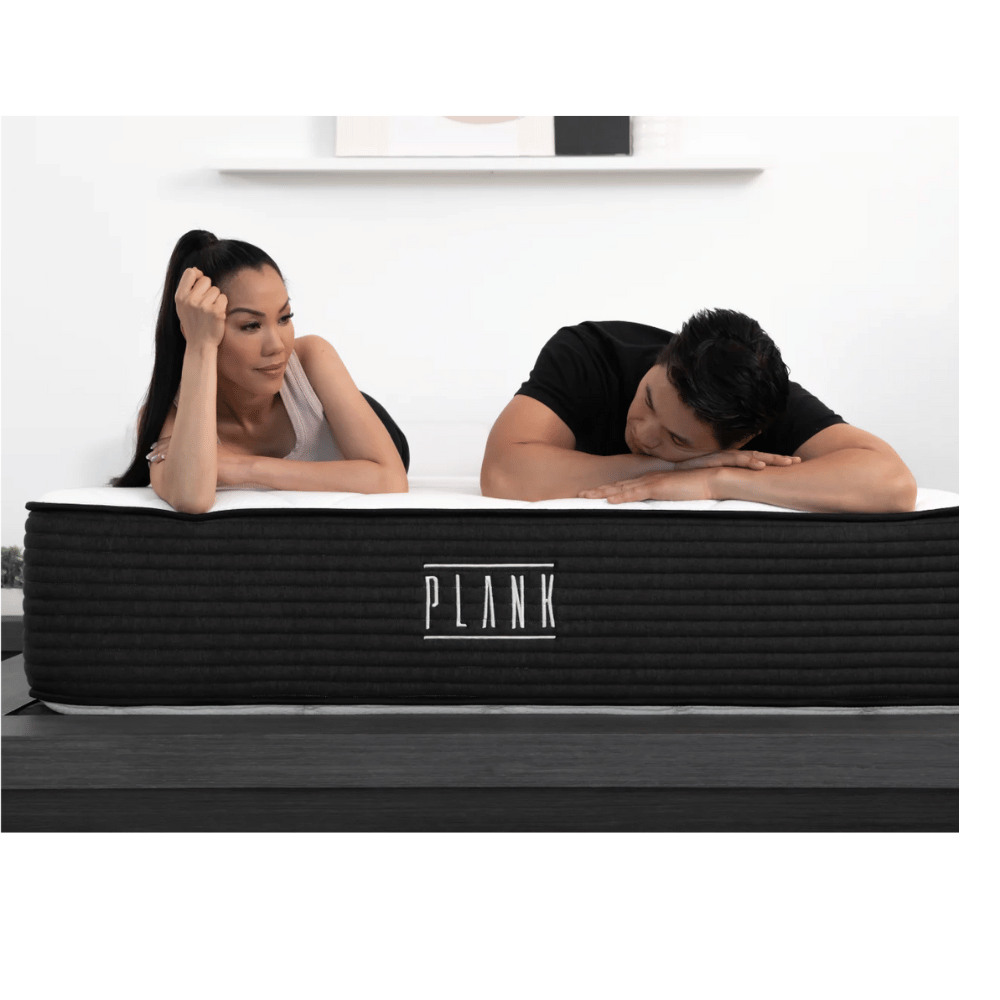
Pros and Cons
Pros:
- Flippable design with Firm and Extra Firm options.
- Great motion isolation and edge support.
- Best for back and stomach sleepers.
Cons:
- Too firm for most side sleepers.
- Cooling panel upgrade available for an extra cost.
Customer Reviews and Ratings
Customers love the Plank Firm for its support and flippable design. Back and stomach sleepers say it keeps their spines aligned, and couples love the motion isolation and edge support. Some users find the Extra Firm side too firm and unsuitable for side sleepers who want plush cushioning, but most agree it’s a great value for its durability and unique firmness.
My Verdict:
The Plank Firm is great for those who want an extremely firm sleeping surface. Its flippable design, motion isolation, and support are ideal for back and stomach sleepers. It is not for side sleepers or those who want a soft feel. The firmness is durable and customizable for those who want firm support and alignment.
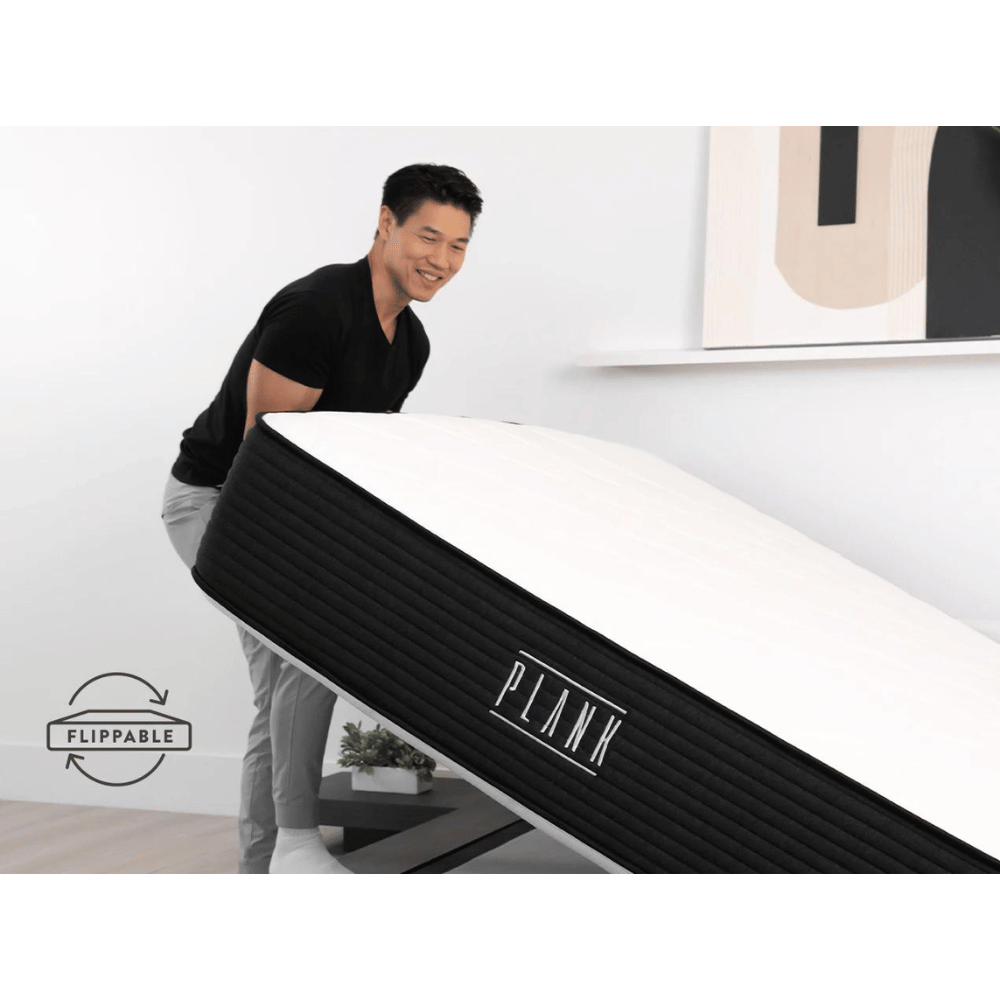
WinkBed Mattress

Price Range
$1,149 - $2,199
Rating: 4.9/5
For all sleepers
The WinkBed mattress is designed for all sleep positions and offers four firmness options: Softer, Luxury Firm, Firmer, and. Side sleepers like the Softer option for pressure relief in the shoulders and hips. Back sleepers prefer the Luxury Firm or Firmer options for balanced support and spinal alignment. Stomach sleepers, especially those needing extra firmness, like the Firmer options, prevent the midsection from sinking too deep.
Features and Benefits
Comfort and Support
- Euro-pillow top with wrapped coils for plush comfort and responsive support.
- Zoned lumbar support for back and stomach sleepers.
- Multiple firmness options to customize your experience.
Temperature Regulation
- Tencel cover breathes and wicks away moisture for a cooler sleep surface.
- Gel-infused foam to dissipate heat. Great for hot sleepers.
- The coil system ventilates to prevent heat buildup at night.
Motion Isolation
- Independent coils absorb motion and minimize motion transfer. Great for couples.
- Foam layers add to the stability and prevent disturbances from a partner’s movements.
- The hybrid design is quiet and undisturbed.
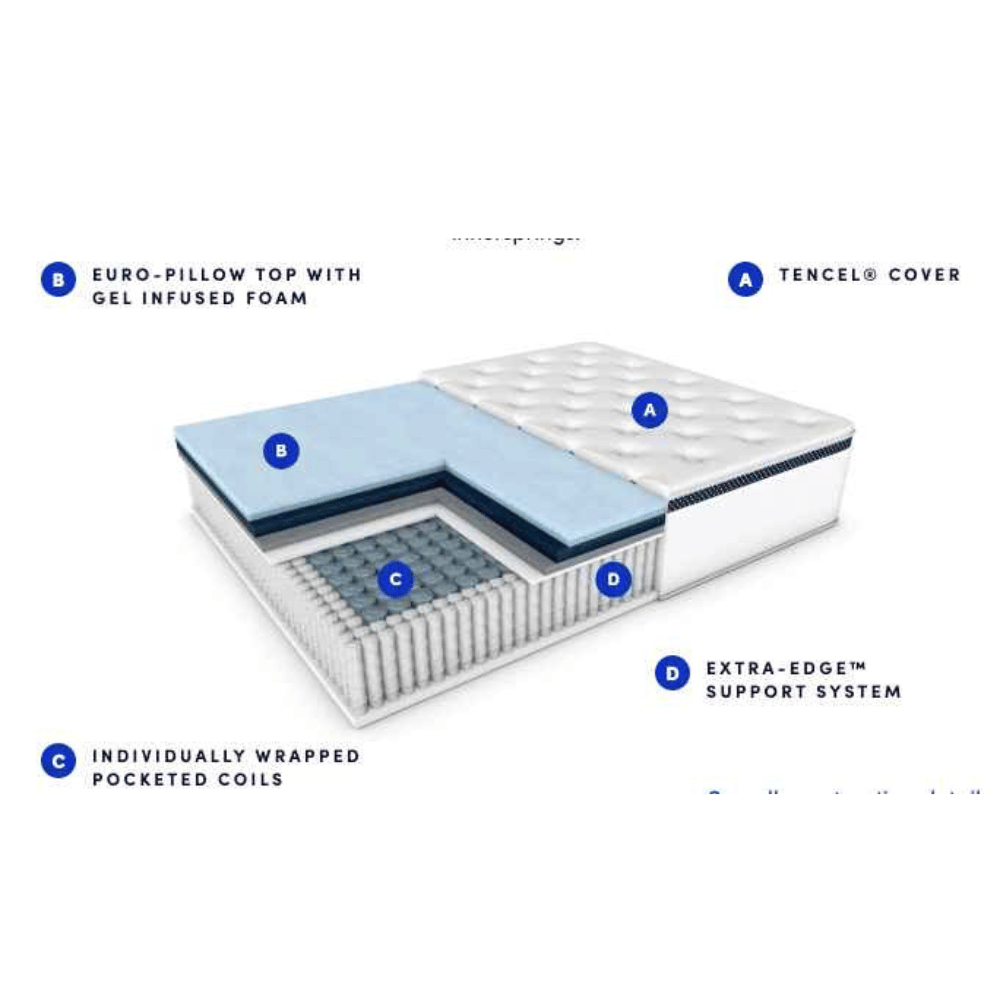
Sleep Innovation
Edge Support
The WinkBed mattress has great edge support due to the reinforced perimeter coils. This allows sleepers to sit or lie near the edge without sagging or feeling unstable.
The edge support also maximizes the usable sleep surface for couples or those who want more room to move around. It also ensures durability and longevity by keeping the mattress without fiberglass shape over time.
Pressure Relief
The WinkBed’s Euro-pillow top and zoned support deliver great pressure relief, especially for side sleepers. The plush top cushions pressure points in the shoulders and hips while the coils distribute weight evenly to reduce strain on the lower back. Back and stomach sleepers get targeted lumbar support to prevent discomfort and promote alignment.
Noise Reduction
Independent coils and layers work together to create a quiet sleep surface. The coils are encased to eliminate creaking, and the foam absorbs vibrations and movement. Great for light sleepers or couples who want a quiet sleep environment.
Materials and Safety
The WinkBed is made with high-quality, eco-friendly materials, including a Tencel cover and CertiPUR-US® foams. It is fiberglass-free and designed for a safe and healthy sleep environment. Its durable construction ensures long-lasting performance, making it great for years of use.
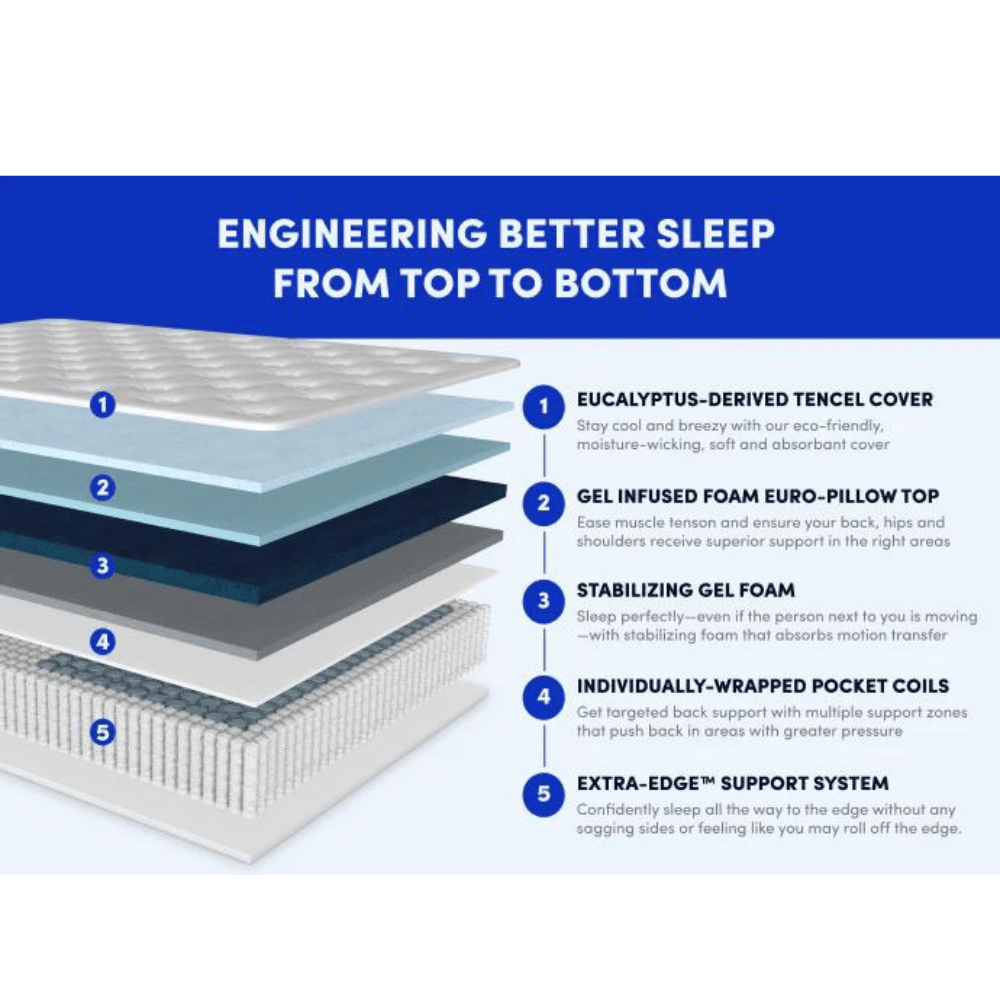
Pros and Cons
Pros:
- Multiple firmness options for all sleep positions.
- Great edge support and motion isolation.
- Cooling features for hot sleepers.
Cons:
- Expensive.
- Heavier to move.
Customer Reviews and Ratings
Customers love the WinkBed’s customizable firmness and luxurious feel. Side sleepers like the Softer for its plush top, while back and stomach sleepers like the Firmer for their targeted support. Couples like the motion isolation and edge support. Some mention the high price, but most agree it’s worth it for its quality, durability, and comfort.
My Verdict
The WinkBed is a great option for those who want a luxurious hybrid. Its customizable firmness, cooling features, and durable construction make it suitable for all sleepers. Although expensive, it is worth it for comfort, support, and longevity.

Leesa Sapira Hybrid Mattress
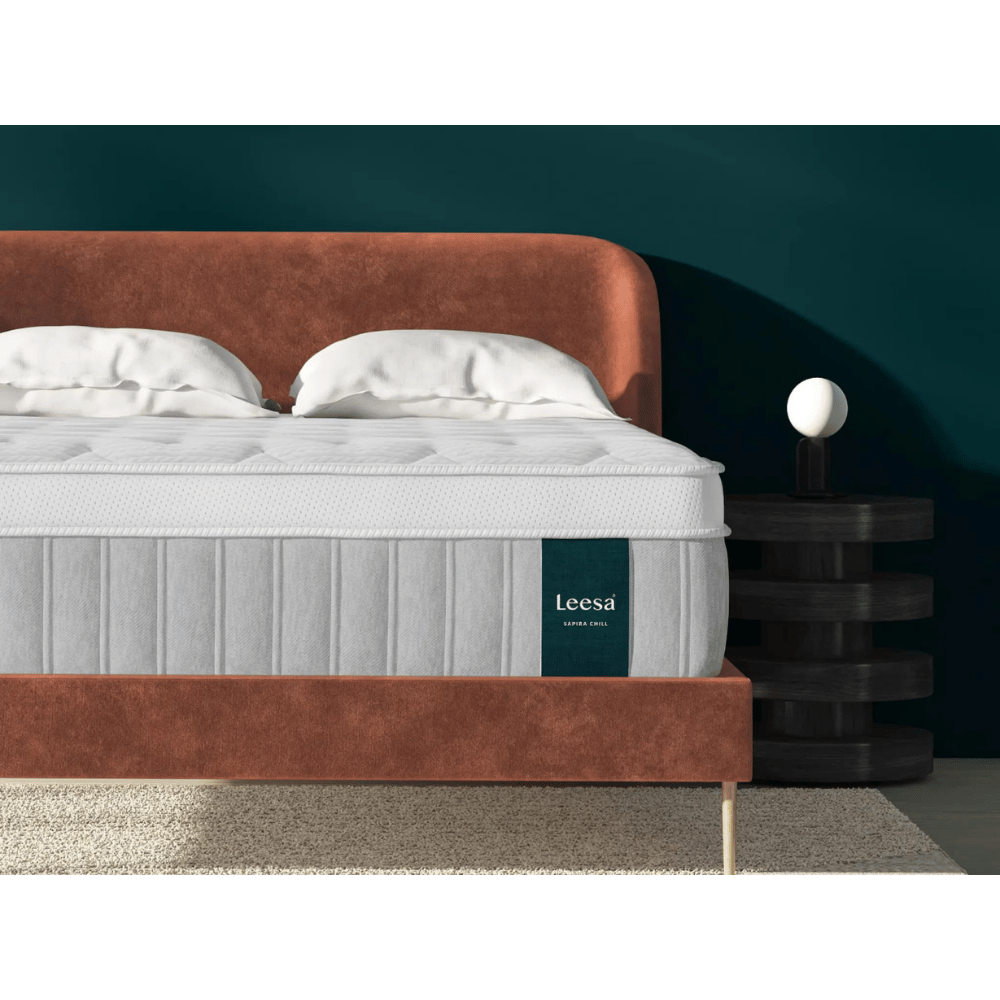
Price Range
$1,099 - $2,299
Rating: 4.8/5
All Sleep positions
The Leesa Sapira Hybrid mattress is a great all position mattress. Side sleepers get plush layers for pressure relief on the shoulders and hips. Back sleepers get balanced support from the pocketed coils and foam for proper spinal alignment.
Stomach sleepers like the medium firmness to prevent the midsection from sinking too deep. Its responsiveness lets combination sleepers move around at night without disturbing a partner.
Features and Benefits
Comfort and Support
- Memory foam and pocketed coils for comfort and support.
- High performance layers hug the body to relieve pressure points and comfort.
- Coil system for spinal alignment and to prevent sagging over time.
Temperature Regulation
- Breathable cover made from cooling fabric blend.
- Memory foam to minimize heat retention temperature-neutral sleep surface.
- The coil system for ventilation is great for hot sleepers who need a cooler environment.
Motion Isolation
- Individually wrapped coils to minimize motion transfer so you’re not disturbed by your partner’s movements.
- Foam layers absorb vibrations for a stable and undisturbed sleep surface.
- Hybrid design balances responsiveness with motion isolation. Great for couples.
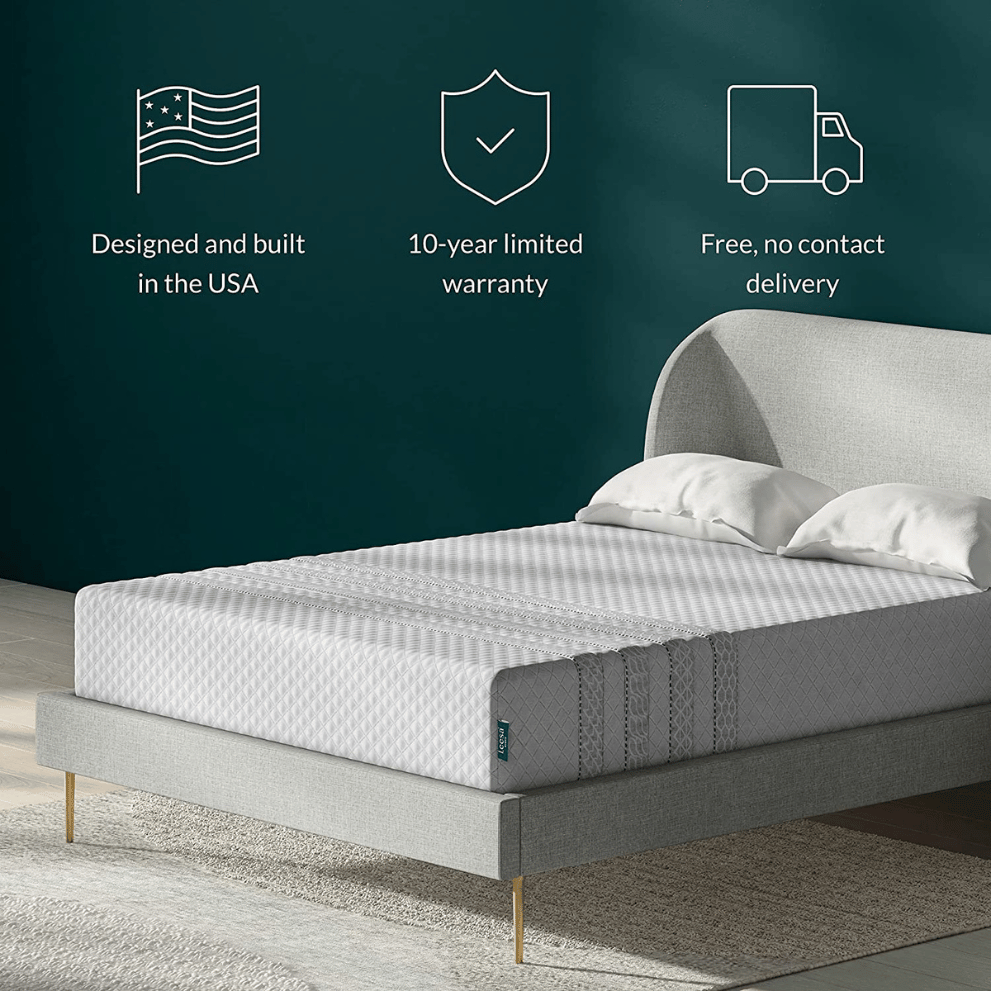
Better Sleep Technology
Edge Support
The Leesa Sapira Hybrid mattress has edge support thanks to the perimeter coils. Using more of the mattress, you can sit or lie near the edge without feeling like you’ll fall off. This is great for couples or those who like to use the whole mattress. It also helps the mattress without fiberglass keep its shape and last longer.
Pressure Relief
The combination of contouring foam and coils provides pressure relief for all sleeping positions. Side sleepers get cushioning for their shoulders and hips, and back and stomach sleepers get support for their lower backs. The medium feel ensures even weight distribution, so you don’t feel any discomfort and can sleep better.
Noise
The wrapped coils and dense layers make for a quiet sleeping surface. The coils are encased to eliminate creaking, and the foam absorbs movement and vibrations. This is great for light sleepers or those who share a bed and need a noise-free sleep environment.
Materials and Safety
The Leesa Sapira Hybrid is made with CertiPUR-US® foams, free of harsh chemicals, and safe for your home. It is also fiberglass-free because we care about safety and the planet. The durable materials are designed to provide long-lasting comfort and support, making it a solid investment.
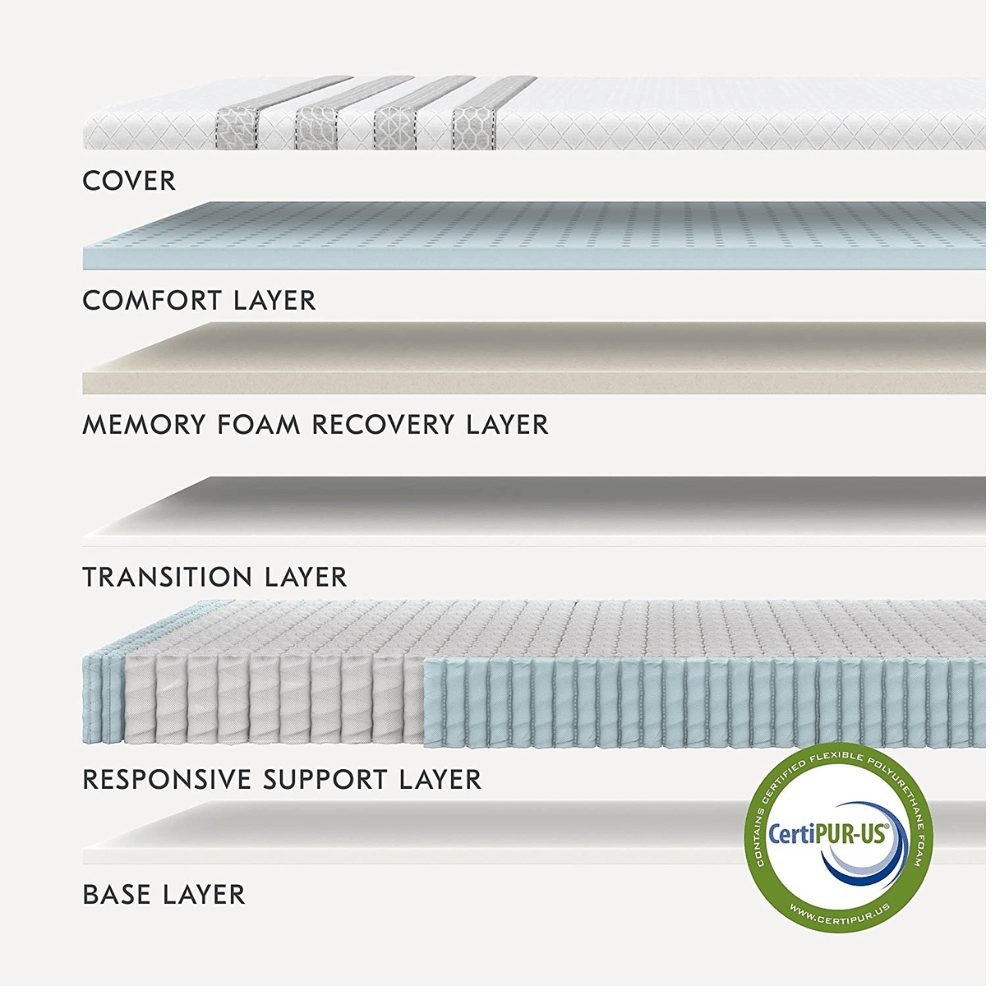
Pros and Cons
Pros:
Cooling for hot sleepers.
Edge support and motion isolation for couples.
Comfort and support for all sleeping positions.
Cons:
More expensive than budget mattresses.
The medium feel may not be soft enough for ultra-plush lovers.
Customer Reviews and Ratings
Customers rave about the Leesa Sapira Hybrid's luxury, support, and cooling. Side sleepers love the pressure relief, back and stomach sleepers like the spinal alignment and couples love the motion isolation and edge support. Some mention the higher price as a con, but most say it’s worth it for the mattress’s durability, quality, and performance.
My Verdict:
The Leesa Sapira Hybrid is a great option for those looking for a luxury hybrid. Its combination of foam and coils provides comfort, support, and cooling for all sleepers. While more expensive, the quality, durability, and features make it worth it for a good night’s sleep.
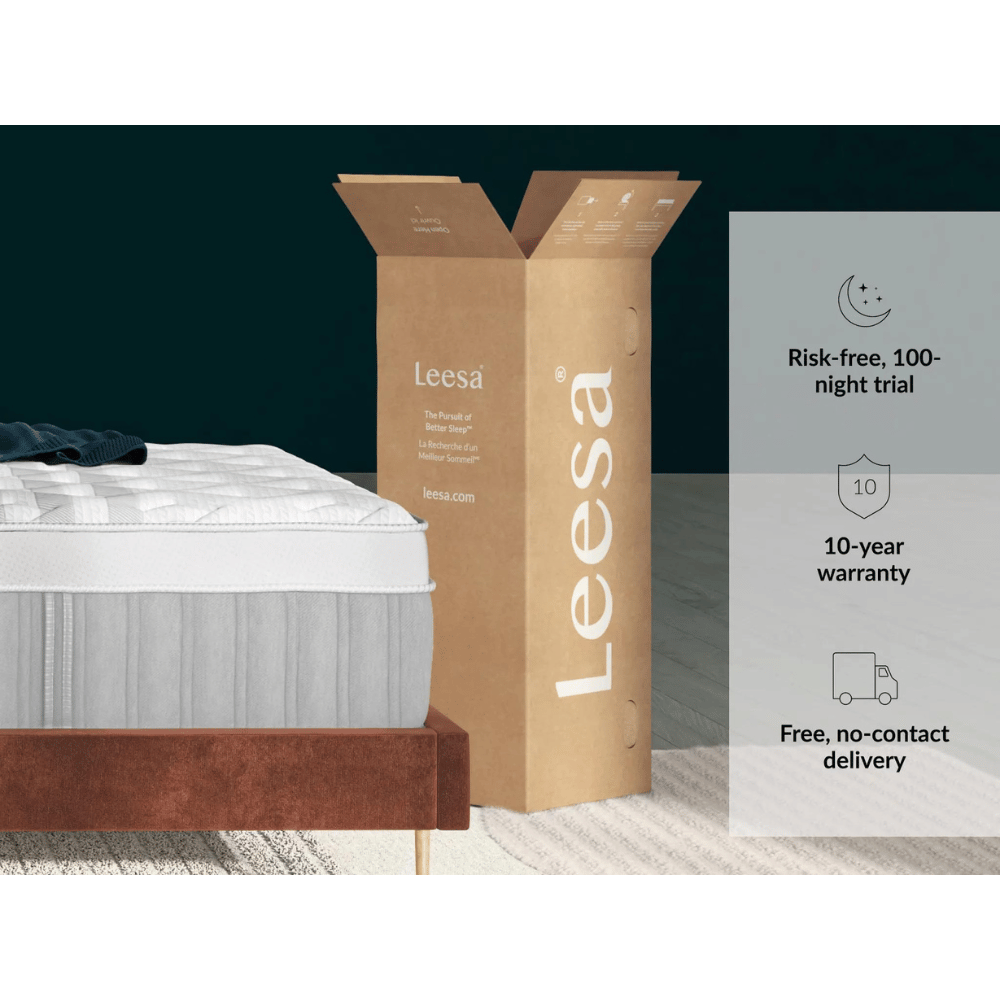
Nolah Original 10" Mattress

Price
$899 - $1,299
Rating: 4.7/5
The Nolah Original 10" mattress is a great all-around mattress for side and back sleepers. Side sleepers get the most out of the medium feel which provides great pressure relief at the shoulders and hips, so you don’t feel discomfort in those areas.
Back sleepers like the foam layers that keep the spine aligned and weight distributed evenly. Stomach sleepers under 230 lbs may also get enough support, but some may prefer a firmer mattress.
Features and Benefits
Comfort and Support
High-resilience foam and durable base layer for long-lasting support and spinal alignment.
Medium feel for all sleepers.
Nolah’s AirFoam™ contours to the body for comfort without the sinking feeling of traditional memory foam.
Temperature
Foam construction keeps hot sleepers cool.
Breathable cover for airflow and no heat buildup.
AirFoam™ is temperature-neutral and cooler than memory foam.
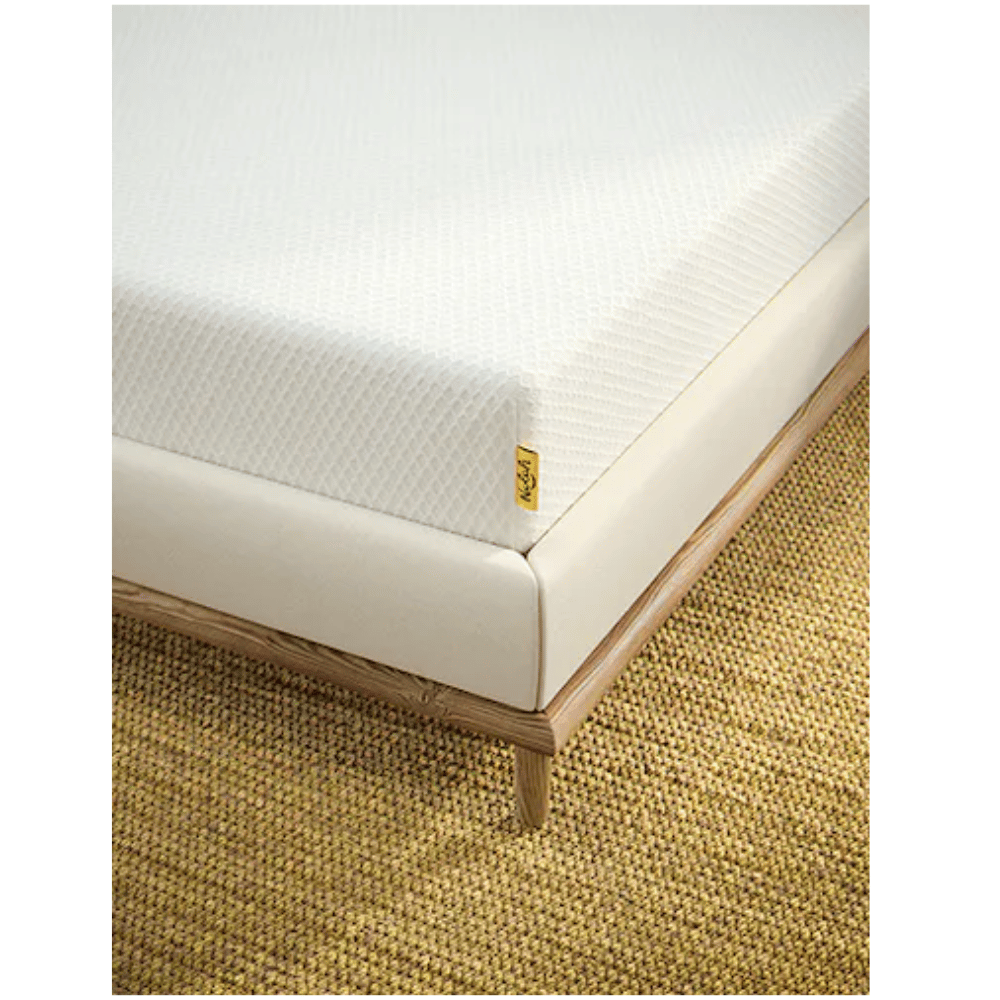
Motion Isolation
Light sleepers will like how it minimizes disturbances from a restless partner.
High-density foam layers absorb vibrations, so motion is not transferred from one side of the bed to the other.
The Nolah Original 10" mattress is perfect for motion isolation for couples.
Enhanced Sleep Innovation
Edge Support
The Nolah Original 10" mattress doesn’t have the reinforced edges of hybrid mattresses, but the high-density foam base provides decent edge support.
Sleepers will feel stable when lying or sitting near the edges, but if you need very strong edge support, you may prefer a hybrid or innerspring mattress. This mattress without fiberglass maximizes the usable sleep surface and maintains its structure over time.
Pressure Relief
The AirFoam™ layer relieves pressure points in the shoulders, hips, and lower back. It is greatt for side sleepers who need cushioning in those areas. Back sleepers like the balanced support that keeps the spine aligned. The foam is adaptive so weight is distributed evenly, reducing discomfort and improving sleep quality.
Noise
All foam mattresses, so silent sleep. The dense layers absorb movement and vibrations with no noise. Perfect for light sleepers or couples who want a quiet night’s sleep.
Materials and Safety
The Nolah Original 10" mattress is made with CertiPUR-US® foams and no harmful chemicals or toxins. Fiberglass-free construction for a safe and eco-friendly sleep environment. It is hypoallergenic, so great for people with allergies or sensitivities.

Pros and Cons
Pros:
Great motion isolation for couples.
Temperature-neutral AirFoam™ for cooler sleep.
Great pressure relief for side and back sleepers.
Cons:
May be too soft for stomach sleepers over 230lbs.
Edge support is limited compared to hybrid mattresses.

Customer Reviews and Ratings
Customers love the Nolah Original 10" for its pressure-relieving AirFoam™ and temperature-regulating properties.
Side sleepers rave about cushioning in sensitive areas, back sleepers like balanced support, and couples like motion isolation. Some mention the lack of edge support, but overall, the mattress gets high marks for comfort, durability, and eco-friendly design.
My Verdict:
The Nolah Original 10" is great for side and back sleepers looking for a medium firm, pressure-relieving mattress.
The AirFoam™ technology is comfortable and has great motion isolation and cooling properties, perfect for couples and hot sleepers. Not suitable for stomach sleepers who need edge support or firmness but overall a great investment for those who prioritize comfort and quality.

The Rise of Organic mattresses
In recent years, other mattress companies have started offering organic mattresses without fiberglass, substituting chemical fire inhibitors with natural materials like wool.
Many consumers are concerned about fiberglass in mattresses. Mattresses sold today often contain a layer of fiberglass inside as a cheap flame retardant.
This layer acts as a fire-resistant barrier underneath the mattress foam. Alternatives like wool or other fire inhibitor agents are being considered to replace fibrous glass in future products.
Plush beds and mattresses made from organic material offer a safer alternative for those who want to protect their loved ones from harmful or combustible materials while enjoying a comfortable sleep experience.
Thus, it's worth considering mattresses that don't contain highly flammable or harmful chemicals in the first place.
Here are some recommendations:
Recommendations for Mattresses That Do Not Contain Fiberglass
Organic Latex Mattresses:
- These are biodegradable and made from natural rubber. They offer excellent support and comfort without any synthetic fibers.
Memory Foam beds:
- Opt for high-quality, CertiPUR-U- certified memory foam mattresses free from harmful chemicals and fibers.
Innerspring Mattresses with Organic Cotton:
- Traditional coil mattresses covered with organic cotton layers can be a good alternative, providing both support and breathability.
Hybrid Mattresses:
- Combining the benefits of foam and springs, hybrid beds offer a good compromise and are often non-fiberglass
Natural Fiber Mattresses:
- These beds are comfortable, eco-friendly, and made from glass wool and cotton.
Benefits of Choosing Fiberglass-Free Mattresses
- While many beds have this feature, not all mattresses do. Organic mattresses, for instance, may use other methods for fire protection.
Some mattress companies avoid glass-reinforced plastic (GRP), particularly because of potential health problems like lung disease and skin irritation.
Healthier Indoor Air Quality:
- Mattresses free from fiberglass don't release harmful particles into the air, contributing to a healthier indoor environment.
Reduced Allergenic Risks:
- Longevity: Many fiberglass-free mattresses are made from durable materials that offer a longer lifespan than traditional fiberglass-based mattresses.
- You're less likely to experience allergic reactions, skin irritations, or respiratory problems.
Ease of Maintenance:
You can often remove and wash the covers of fibrous glass-exempt beds without worrying about exposing yourself to harmful fibers.
Environmental Benefits:
- Natural and organic materials are often more eco-friendly, contributing less to pollution and waste.
- Using recycled glass and opting for fiberglass-exempt alternatives, you invest in your family's long-term health and comfort and contribute to a more sustainable future.
How to Handle Fiberglass in a Mattress Safely
Awareness is key. If a company sells mattresses with fibrous glass, it should be transparent about the risks.
- Four mattresses recently recalled contained fiberglass that was not properly sealed, leading to heightened consumer exposure.
Tips for Minimizing Risks
- Awareness is key regarding fiberglass in mattresses. If a company sells mattresses containing this material, it must be fully transparent about the associated risks.
- Many memory foam mattresses sold with fiberglass act as a fire inhibitor, but they can present health challenges if not properly managed.
- Four recently recalled mattresses had fiberglass that was not adequately sealed, leading to increased consumer risks.
Consumers should pay attention to a few key details to use a fiberglass bed properly.
First, never remove the outer shell or inner cover, as this can release harmful fiberglass shards into the air. If you desire extra comfort, please add a mattress topper that does not contain fiberglass.
Keep the Mattress Cover Intact:
- It's crucial to Keep the outer cover of any memory foam bed sealed. The inner mattress cover often contains fiberglass.
- If this cover is damaged or unzipped, microscopic fiberglass particles could be released into the air. To minimize risk, opt for fiberglass-free mattress covers as replacements in case of any damage.
Use Additional Protective Layers:
- To add another level of safety, use an extra mattress protector or bedding layer. This barrier will prevent contact between you and foam mattresses, whether they contain fiberglass or other chemical flame retardants.
- Specialized protectors made of natural materials can also reduce exposure to flame-retardant chemicals in the mattress.
- If you have a mattress with fiberglass, cleaning it is a delicate process. Use a vacuum with a HEPA filter to suck up any stray particles without releasing them into the air.
- Traditional vacuums can spread these particles, so a HEPA filter is crucial.
Air Quality:
Maintaining ventilation in the room is necessary, especially when mattresses incorporate fiberglass for its fire-retardant properties.
- Although air purifiers can help remove small particles, they are not a substitute for a well-ventilated room and proper mattress handling.
Handle with Care:
- If the mattress needs to be moved, please be cautious. Dislodging the fiberglass layer can make fiberglass dangerous to your health.
- Always wear gloves and a protective mask to minimize the risk of inhaling or contacting these particles.
- When you dispose of your mattress, consult professionals who can safely handle glass-reinforced plastic (GRP) or other fire-retardant materials.
Consider Fiberglass-Free Options:
While polyurethane foam is used in memory foam mattresses, it's also possible to find a fiberglass-free mattress that uses alternative fire inhibitors or natural materials for fire resistance. This can be an ideal solution for those looking to avoid potential health hazards while benefiting from the comfort of a memory foam mattress.
Conclusion and final thoughts:
Choosing the right mattress is more than just a matter of comfort; it's a matter of health and safety.
While fiberglass used in mattresses may be cost-effective, they pose potential health hazards, from minor irritations to serious respiratory conditions.
There are safer, fiberglass-free alternatives that offer comfort and peace of mind.
If you already own a fiberglass mattress, I recommend rigorously following safety guidelines to minimize risks.
Your choice of a mattress shouldn't compromise your well-being.
Invest in a fiberglass-free option for a healthier, better night's sleep.
FAQs
Is it OK to sleep on a mattress with fiberglass?
While sleeping on a fiberglass mattress is generally not recommended due to potential health problems and risks, such as skin inflammation and respiratory conditions, some people use them without immediate adverse health effects or problems. However, proper handling and preventive measures are crucial to minimize exposure and related health risks.
Is it OK to buy a mattress with fiberglass?
Although purchasing a mattress with glass fiber may be budget-friendly, it can cause health problems, such as respiratory issues and skin inflammation. If you opt for one, following safety guidelines to minimize risks is crucial, although non-fiberglass alternatives are generally safer and recommended.
How do I know if my mattress has fiberglass?
To determine if your used mattress covers or contains glass wool, check the product label or tags for terms like "fiberglass."You can also consult the specific mattress manufacturer's website or product manual for a materials list. Some mattresses indicate fiberglass use to meet fire-resistance standards.
What to do if you have fiberglass in your bed?
If you discover it, take immediate steps to minimize health risks. Keep the mattress cover intact, use additional protective layers, and clean it using a HEPA filter vacuum. Please ensure you have good room ventilation and consider professional disposal or replacement with a non-fiberglass alternative.
Do traditional mattresses have fiberglass?
Traditional innerspring mattresses typically do not contain glass plastic (GRP); they often use other materials, such as wool or cotton, to resist fire. However, some modern memory foam and hybrid mattresses include fibrous glass to meet fire safety standards. Please always check labels and product descriptions to ensure this.
References:
"Federal Flammability Standards: 16 CFR Parts 1632 and 1633" (Federal Trade Commission, "Mattress Labeling Rules." (1973).)
Jeff Wagner, Jefferson Fowles, and Tracy Barreau, Paul B. Tchounwou, Academic Editor. "Fiberglass and Other Flame-Resistant Fibers in Mattress Covers." <https://www.ncbi.nlm.nih.gov/pmc/articles/PMC8835476/>

